
































































































































30
Eight Takeaways From the NACS Show
From pickles to implosions, it was a memorable four days in Las Vegas.
48
See the new products that your industry peers were most interested in.
50 It’s a Marathon, Not a Sprint

Exploring the NACS Show Expo will leave you exhausted—but it’s oh so worth it.
70
Q&A: Bill Kent
The CEO of Kent Kwik discusses his company’s DNA, what makes a successful acquisition and more.
78
Better scheduling can increase efficiency, save on labor costs and lead to happier employees.
86
Rev Up Your Technology for the Barcode Revolution
This article is brought to you by GS1 US.
Take a scan of the requirements and upgrades needed for Sunrise 2027.
Subscribe to NACS Daily—an indispensable “quick read” of industry headlines and legislative and regulatory news, along with knowledge and resources from NACS, delivered to your inbox every weekday. Subscribe at www.convenience.org/NACSdaily

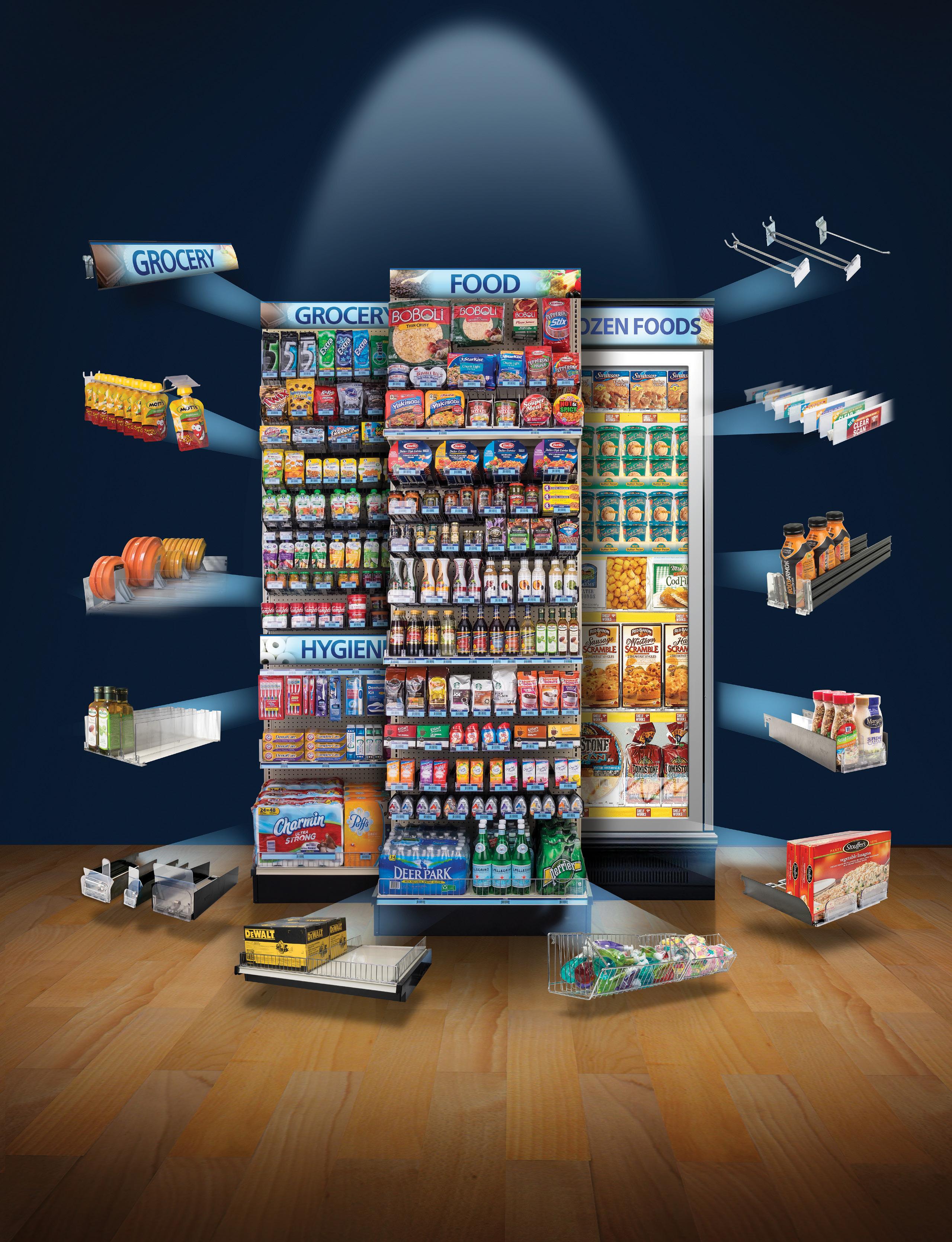




EDITORIAL
Jeff Lenard V.P. Strategic Industry Initiatives (703) 518-4272 jlenard@convenience.org
Ben Nussbaum Editor-in-Chief (703) 518-4248 bnussbaum@convenience.org
Leah Ash Editor/Writer lash@convenience.org
Noelle Riddle Editor/Writer nriddle@conveneince.org
Lauren Shanesy Editor/Writer lshanesy@convenience.org
CONTRIBUTING WRITERS
Joe Beeton, Jamie Grill Goodman, Sarah Hamaker, Pat Pape, Emma Tainter DESIGN MX www.themxgroup.com
ADVERTISING
Stacey Dodge Advertising Director/ Southeast (703) 518-4211 sdodge@convenience.org
Jennifer Nichols Leidich National Advertising Manager/Northeast (703) 518-4276 jleidich@convenience.org
Ted Asprooth National Sales Manager/ Midwest, West (703) 518-4277 tasprooth@convenience.org
Stephanie Sikorski Vice President, Marketing (703) 518-4231 ssikorski@convenience.org
Nancy Pappas Marketing Director (703) 518-4290 npappas@convenience.org
Logan Dion Digital Media and Ad Trafficker (703) 864-3600 ldion@convenience.org
CHAIR: Brian Hannasch, Alimentation Couche-Tard Inc.
TREASURER: Annie Gauthier, CFO/Co-CEO, St. Romain Oil Co. LLC
OFFICERS: Varish Goyal, Loop Neighborhood Markets; Lonnie McQuirter, 36 Lyn Refuel Station; Charles McIlvaine, Coen Markets Inc.; Tony Miller, Retail Delek US; Chris Bambury, Bambury Inc.; Missy Matthews, Childers Oil Co.
GENERAL COUNSEL: Doug Kantor, NACS
MEMBERS: Lisa Blalock BP North America Inc.; Tom Brennan, Casey’s; Andrew Clyde, Murphy USA; Terry Gallagher, Gasamat Oil Corp/ Smoker Friendly; Raymond Huff, HJB Convenience Corp. dba Russell’s
NACS SUPPLIER BOARD
SUPPLIER BOARD CHAIR: Vito Maurici, McLane Co. Inc.
CHAIR-ELECT: Bryan Morrow Chobani & La Colombe
VICE CHAIRS: Kevin LeMoyne, The Coca-Cola Company; Mike Gilroy, Mars Wrigley; Jim Hughes, GALLO
MEMBERS: Tony Battaglia, Tropicana Brands; David Charles, Cash Depot; Brent Cotten, The Hershey Company; Jerry Cutler, InComm Payments; Jack Dickinson, Dover Corporation; Matt Domingo, Reynolds; Mark Falcone, Greenridge Naturals; Kevin Farley, Impact 21; Danielle Holloway, Altria Group Distribution Co.; Kevin Kraft, Tropicana Brands; Sarah Vilim,
Convenience; Mark Jordan, Refuel Operating Co.; Brian McCarthy, Blarney Castle Oil Co.; Natalie Morhous, RaceTrac Inc.; JP Patel, FASTIME; Robert Razowsky, Rmarts LLC; Stanley Reynolds, 7-Eleven Inc.; Kristin Seabrook, Pilot Travel Centers LLC; Travis Sheetz, Sheetz Inc.; Babir Sultan, Fav Trip; Doug Yawberry, Weigel’s Stores Inc., Scott Zietlow, Kwik Trip Inc.
PAST CHAIRS: Victor Paterno, president and CEO of Philippine Seven Corp.; Don Rhoads, president and CEO of The Convenience Group LLC.
SUPPLIER BOARD REPRESENTATIVES: Vito Maurici, McLane; Brian Morrow, Chobani & La Colombe
Keurig Dr Pepper; Jay Nelson, Excel Tire Gauge; Nick Paich, GSTV; Ramona Giderof Diageo Beer; Ryan Calong Pabst; Jordan Nicgorski, Juul Labs
GENERAL COUNSEL: Doug Kantor, NACS
STAFF LIAISON: Bob Hughes, NACS
RETAIL BOARD REPRESENTATIVES: Tom Brennan, Casey’s; Scott Hartman, Rutter’s; Kevin Smartt, TXB
PAST CHAIRS: David Charles, Cash Depot; Brent Cotton, The Hershey Company; Kevin Farley, Impact 21
NACS Magazine (ISSN 1939-4780) is published monthly by the National Association of Convenience Stores (NACS), Alexandria, Virginia, USA.
Subscriptions are included in the dues paid by NACS member companies. Subscriptions are also available to qualified recipients. The publisher reserves the right to limit the number of free subscriptions and to set related qualifications criteria.
Subscription requests: nacsmagazine@convenience.org
POSTMASTER: Send address changes to NACS Magazine, 1600 Duke Street, Alexandria, VA, 22314-2792 USA.
Contents © 2023 by the National Association of Convenience Stores. Periodicals postage paid at Alexandria VA and additional mailing offices. 1600 Duke Street, Alexandria, VA 22314-2792
>
About a decade ago, we videotaped interviews with NACS Show attendees, asking them to complete the thought, “The NACS Show is …”
The responses were illuminating. Every response was about a feeling or an experience. It was about emotion and excitement. And then they often added another line: “You gotta go!”
“You gotta go” is also something people increasingly say about the great stores in our industry. And that is a huge shift in how consumers define our business. Our stores have traditionally been defined by their convenient locations, their extended hours of operation or their speed of service. And yes, those are still very much attributes of our industry. But consumers are continuing to evolve their definition of our industry beyond traditional forms of convenience. They’re increasingly going to our stores because doing so makes them feel good. It’s an experience, not just a transaction.
Sometimes, it’s difficult to explain what “experience” means to customers because it varies from customer to customer, and even with individual customers based on their mood and needs at a specific moment in time.
Because the definition of “experience” is evolving, this year’s NACS Show integrated different ideas on how to enhance your customers’ experiences. The next two issues of NACS Magazine deliver comprehensive coverage of the NACS Show and present great takeaways and insights. Look for callouts throughout this issue (and my “floating head”) that give insider’s perspective into enhancing customer experience.
This was my 25th NACS Show, and each one has been a unique experience. Every year I take away pages of notes

Consumers are continuing to evolve their definition of our industry beyond traditional forms of convenience.
Jeff
Lenard vice president of strategic industry initiatives
Look for notes from Guest Editor Jeff Lenard throughout this issue.
with new ideas and concepts to consider and to-dos and follow-ups with people I met there. And like many of you, I use the NACS Show to jumpstart my strategic planning process for the coming year. We gather as teams and talk about what we’ve seen and heard— and what we can do about it and build into plans for 2025.
Perhaps my biggest takeaway from the NACS Show year after year is its energy. It’s the vibe from a show that is really unlike any I’ve ever attended. It’s the vibe of people sharing ideas and helping each other so they can better serve their customers. It’s the vibe of a thriving industry that is pushing itself forward.
The industry’s energy pushes the NACS staff forward after we’ve just expended a lot of energy delivering the best experience possible to every attendee at the NACS Show. Despite what a few folks jokingly asked me on site, we don’t take a month-long nap after the NACS Show. We only have a few weeks to get out the next issue of NACS Magazine. We have a new NACS Daily due tomorrow. The phone is ringing, and it’s probably a reporter who wants to learn more about the elevated customer experience in stores. Excuse me, but I gotta go!

































































































































































May Effler just celebrated her 20-year anniversary with Onvo. She enjoys her job at the company’s Gibson, Pennsylvania, location so much that when it came time for her to retire from her position as store manager—a role she’d held for 12 years—she passed the torch to another team member and stayed on as a cashier.
Effler moved to the United States from Glasgow, Scotland, in 1973, and worked in the banking industry until she began as a cashier with Onvo in 2004.
She spoke with NACS Magazine about:
WHY SHE LOVES WORKING AT A C-STORE:
Convenience stores offer the whole spectrum of anything someone would need, so we are the go-to place for people—from locals to people passing through on their travels. Through that, I have met so many interesting people over the years. We have people from all different cultures and from all over the world that come through our stores. You meet so many people from different walks of life here.
We get a lot of travelers being near the highway, and I like to ask them, “Where are you going on your journey?” I like hearing where they’re from and what they’re doing. It’s about so much more than just serving them and thanking them for their business, it’s about being personable.
WHAT SHE FINDS MOST FULFILLING ABOUT HER JOB:
It’s being of help to people that need it. A lot of people will ask for directions and I can help them find their way or suggest a shorter route to them. Or if they’re looking for an item and we don’t have it, I’ll tell them where else they
Celebrating the people who make our industry great.

can find it, even if its across the street at another store. It’s about always being helpful to a customer—if a customer comes in and has a need, you are the one that serves that need.
It’s kind of like being a nurse. A nurse has a patient that they take care of. In convenience, we are the ones who take care of our customers.
WHY SHE WOULD ENCOURAGE SOMEONE TO WORK AT A C-STORE:
It’s the only place where you’re going to meet every different type of person
of race, nationality and ethnicity all in one store. Especially if your store is located on a highway where people are traveling. You’re not going to get that anywhere else, where you can meet all types of people from different walks of life, ask them questions about themselves and learn about their culture.
You also form true friendships here. When my frequent customers come in, I really get to know them and ask about their families and kids. Convenience is a great opportunity to meet and help people.

















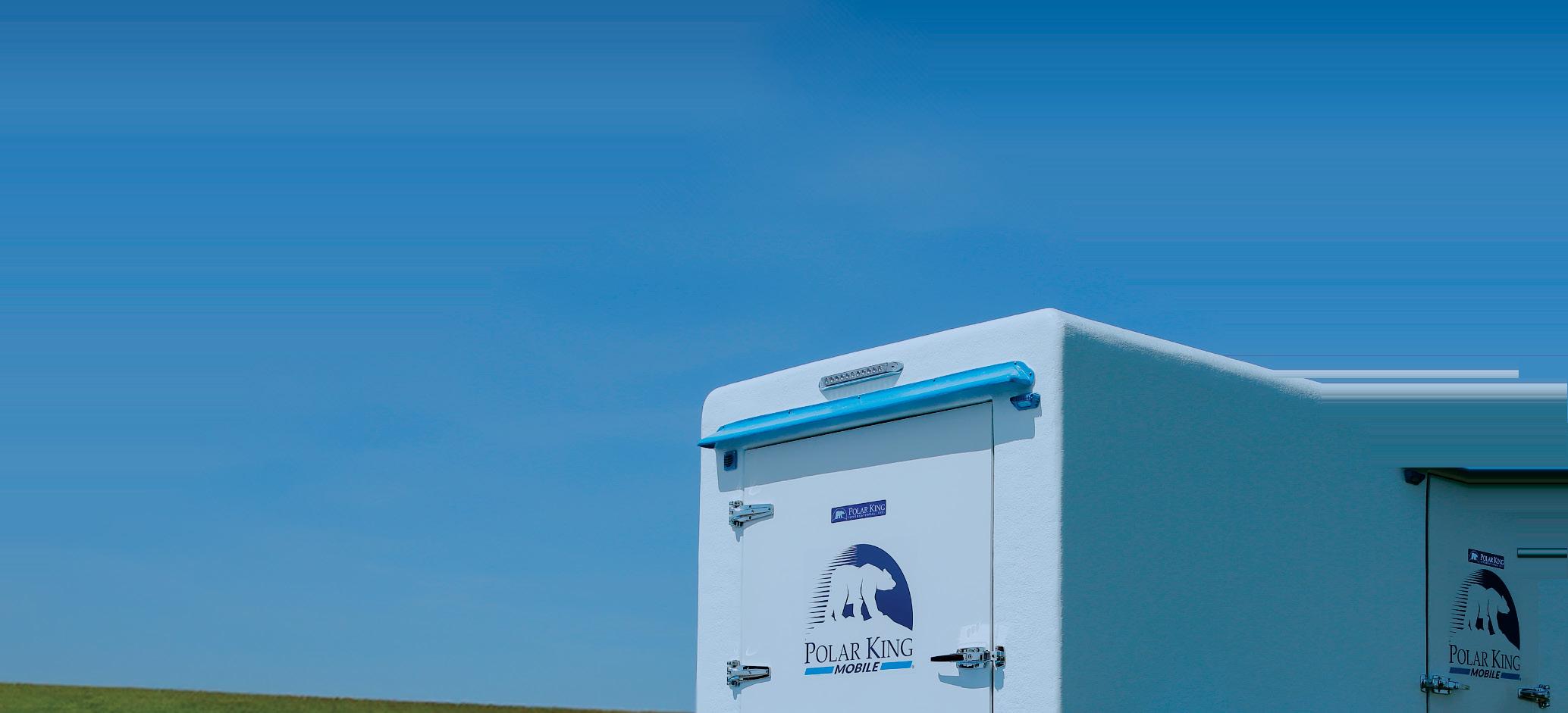
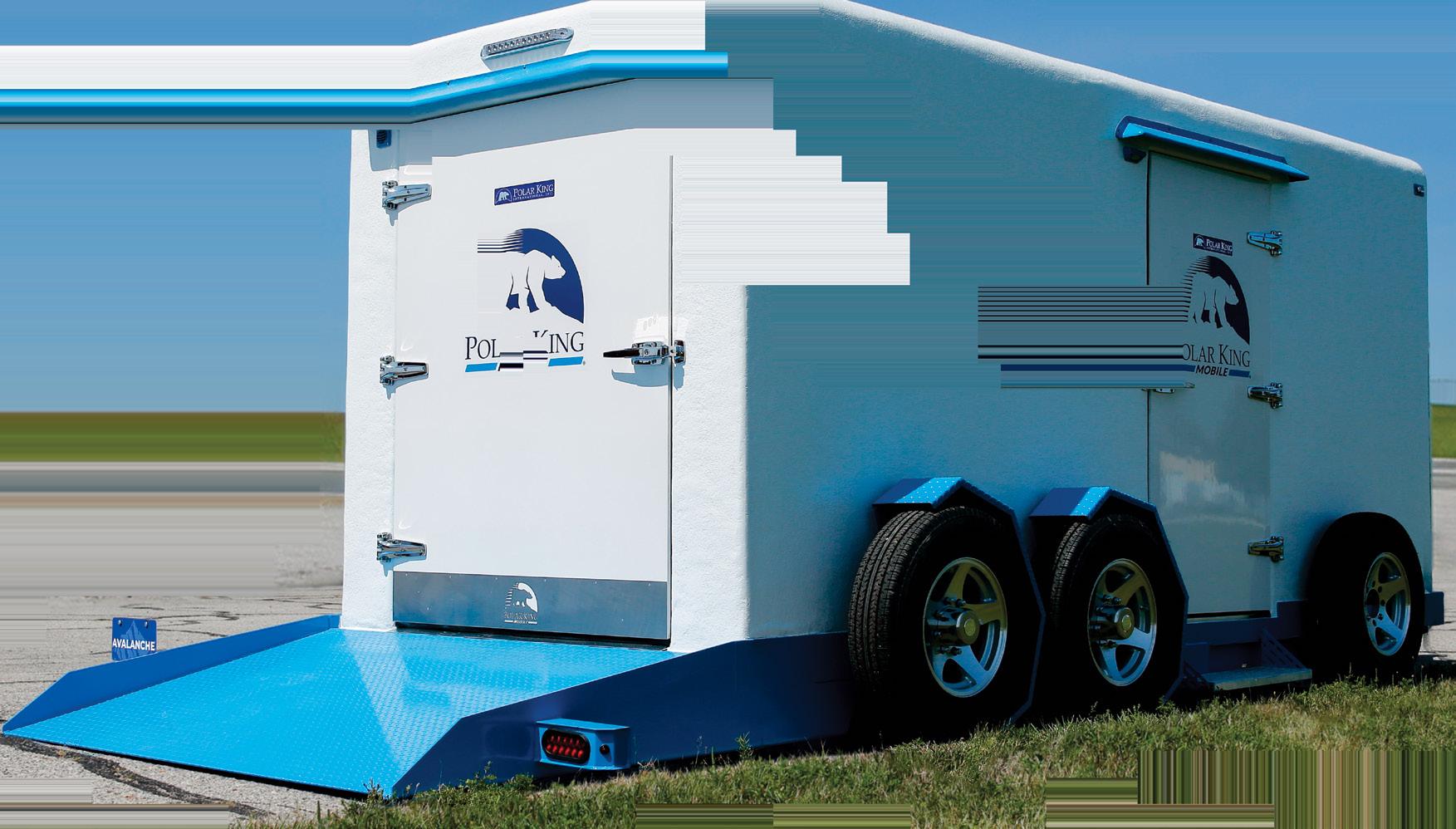

Brian Hannasch, special advisor to Alimentation Couche-Tard Inc., was named 2024-25 NACS chairman of the board. The election took place at the NACS board of directors meeting on
October 7 during the NACS Show in Las Vegas, and Hannasch began his term at the conclusion of the Show. As NACS chairman, Hannasch also leads the NACS political engagement committee.

Hannasch served as president and CEO of Couche-Tard from September 2014 to September 2024, when he retired from that position. He also served four years as chief operating officer. Over the past 16 years, Hannasch has been involved in setting and executing the business strategy of Couche-Tard with the executive leadership committee.
Couche-Tard is a global leader in convenience and mobility, operating in 31 countries and territories, with more than 16,700 stores, of which approximately 13,100 offer road transportation fuel. With its wellknown Couche-Tard and Circle K banners, it is one of the largest independent convenience store operators in the United States and a leader in the convenience store industry and retail fueling in Canada, Scandinavia, the Baltics, Belgium and Ireland. It also has an important presence in Luxembourg, Germany, the Netherlands, Poland and the Hong Kong Special Administrative Region of People’s Republic of China. Approximately 149,000 people are employed throughout the CoucheTard network.
Hannasch earned a B.A. in finance from Iowa State University and an M.B.A. in marketing and finance from the University of Chicago.
As NACS chairman, Hannasch also leads the NACS executive committee, which provides strategic direction and financial oversight to the association.







































































































































































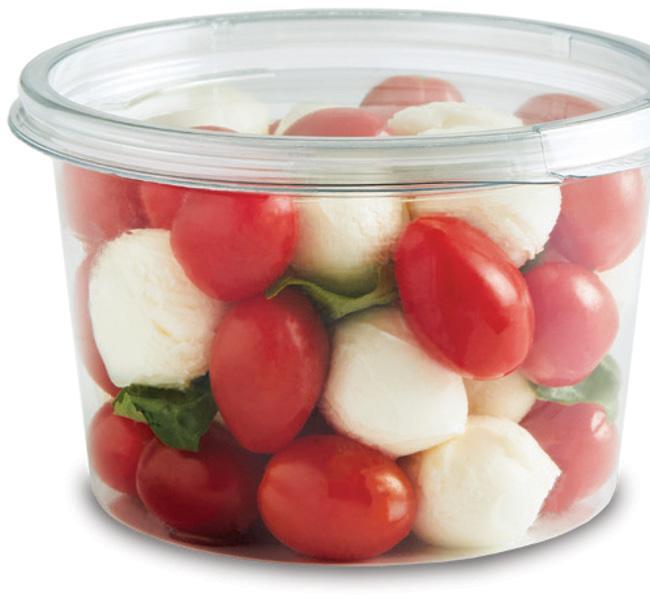































































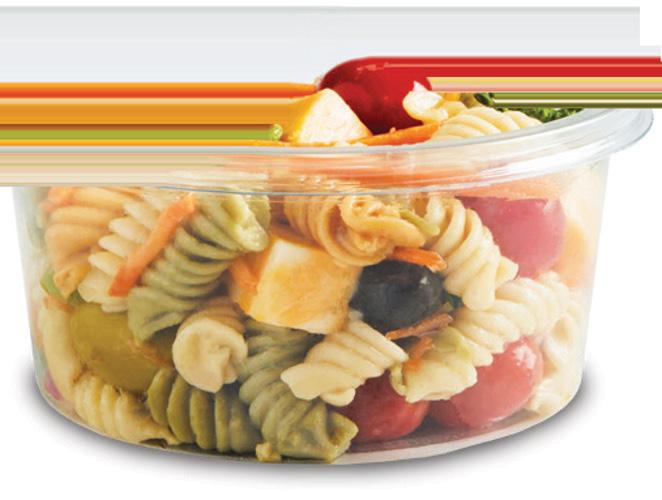



Crystal Seal Cravings round deli containers are made with our EcoStar® post-consumer recycled PET material and are recyclable with a #1 resin code to meet your sustainability goals. Most importantly, we added our patent pending tamper-evident feature on the lid, so you and your customers ensure the safety and security of the contained food. The round shape makes for easy stacking, optimizing shelf space while providing superior clarity. Available in 5 sizes. Satisfy your cravings, get your free sample kit today!
Committee members are:
• Vice chairman and treasurer: Annie Gauthier, CFO/Co-CEO, St. Romain Oil Co. LLC (Mansura, Louisiana)
• Vice chairman, at large: Varish Goyal, CEO, Loop Neighborhood Markets (Atherton, California)
• Vice chairman, legislative: Lonnie McQuirter, director of operations, 36 Lyn Refuel Station (Minneapolis, Minnesota)
• Vice chairman, research and technology: Charles McIlvaine, chairman and CEO, Coen Markets Inc. (Canonsburg, Pennsylvania)
• Vice chairman, at large: Tony Miller, president, retail, Delek US (Brentwood, Tennessee)
• Vice chairman, retail engagement: Chris Bambury, president, Bambury Inc. (Sonoma, California)
• Vice chairman, at large: Missy Matthews, owner, Childers Oil Co. (Whitesburg, Kentucky)
Also serving on the executive committee are 2023-24 NACS Chairman Victor Paterno, president and CEO of Mandaluyong, Philippinesbased Philippine Seven Corp., who continues to serve as chair of the NACS international board, and 2022-23 NACS Chairman Don Rhoads, president and CEO of The Convenience Group LLC. During the October 7 meeting, NACS also named new retail members to its board of directors:
• Lisa Blalock, VP convenience Americas, BP North America Inc. (La Palma, California)
• Mark Jordan, CEO, Refuel Operating Co. (North Charleston, South Carolina)
• Travis Sheetz, president and CEO, Sheetz Inc. (Altoona, Pennsylvania)
• Scott Zietlow, CEO and chairman, Kwik Trip Inc. (La Crosse, Wisconsin)
The NACS supplier board also named new leadership and members. Vito Maurici, senior vice president of sales at McLane Co. Inc., was named the 2024-25 chairman of the NACS supplier
board, and Bryan Morrow, VP, brand sales at Chobani and La Colombe, was named chair-elect and as a supplier representative on the NACS board of directors.
New supplier board vice chairmen are:
• Kevin LeMoyne, senior vice president, customer leadership, The Coca-Cola Company
• Mike Gilroy, VP, trade development and sponsorship, Mars Wrigley
• Jim Hughes, sales director, malt and RTD/spirits, Gallo
New supplier board members are:
• Jordan Nicgorski, VP, U.S. strategic key accounts, Juul Labs Inc.
• Ryan Calong, SVP, national accounts, small format, Pabst Brewing Company
The NACS Executive Education courses for 2025 are now scheduled. Held at Ivy League universities, these exclusive and customized courses are made for the convenience industry and built to help convenience leaders grow their skills and drive success at their companies.
Financial Leadership Program
Dates: July 13-18, 2025
Location: The Wharton School, University of Pennsylvania, Philadelphia, PA
Marketing Leadership Program
Dates: July 20-25, 2025
Location: Kellogg School of Management, Northwestern University, Evanston, IL
Executive Leadership Program
Dates: August 3-7, 2025
Location: Dyson School, Cornell University, Ithaca, NY
Innovation Leadership Program at MIT
Dates: November 2-7, 2025
Location: MIT Sloan School of Management, MIT, Cambridge, MA
Women’s Leadership Program at Yale
Dates: November 17-22, 2025
Location: Yale School of Management, Yale University, New Haven, CT
To learn more about NACS Executive Education, contact Brandi Mauro, NACS education program manager, at bmauro@convenience.org.



“I don’t feel safe.”

Learn active strategies to keep your store safe
In response to the issues of store security, safety and loss prevention becoming more top of mind to retailers, NACS is hosting the first Loss Prevention and Safety Symposium. The event will take place December 3 and 4 in Dallas, Texas.
“The volume of concerns being expressed by our members regarding protecting their people and managing their assets has risen to unprecedented levels, and so over the course of the last year we’ve convened research and an industry working group to understand the key pain points and where solutions and dialogue are needed,” said Lori Buss Stillman, vice president of research and education at NACS. “It’s really an event developed for the industry by the industry, and led by convenience industry loss prevention and asset protection leaders because it’s a topic that they care deeply about.”
Margaret Hardin Mannion, government relations manager at NACS, added that “while there are many other conferences on loss prevention and asset protection, they are often targeted at different sectors of retail. We wanted to fill that void and bring our industry to the table at an event that’s designed specifically for the convenience channel.”
The event will kick off the afternoon of December 3 with an opening session on the growing threat of crime and safety in convenience retail, as well as a reception and networking event. The morning of December 4 will begin with a panel discussion on priorities and strategies for protecting employees and stores, featuring leaders in asset protection from
Casey’s General Stores (Mark Stinde), 7-Eleven (Art Lazo) and Parker’s Kitchen (Britt Davidson).
The agenda is divided into three tracks: protecting people, safeguarding against loss and investing in safer communities.
In sessions focused on protecting people, the agenda includes:
• A session on de-escalation tactics and mitigating violence led by Michael Loox, senior manager of store security and loss prevention at Sheetz, and Courtney Trieger, manager of retail asset support at EG America
• A session on addressing internal theft
• A session on addressing vulnerable populations led by Wes Pate, VP of loss prevention and risk management at Refuel Operating Company
“As much as everyone wants to protect their stores from financial loss, it’s first and foremost about keeping their people safe,” said Buss Stillman.
As part of the safeguarding against loss track:
• Wawa’s Bryon Coleman, manager of asset protection and security, will lead a session about protecting against shimmers, skimmers and fuel pump manipulation.
• Glenn Master, head of asset protection, security and crisis management at McLane will speak on safeguarding the supply chain against loss.
• Casey’s Mark Stinde will lead a conversation on managing stores from a total loss prevention perspective.
To help retailers invest in safer communities:
• Parker’s Britt Davidson will discuss how to use technology to address threats.
• Buss Stillman will join with the Loss Prevention Council to lead a session on capturing data to support awareness, advocacy and action.
• Michael Junk, manager of public affairs and government at QuikTrip, and NACS’ Hardin Mannion will discuss how retailers can build partnerships with local government, law enforcement and other retailers to strengthen their approach to combating retail crime.
Following sessions in the three tracks, attendees will gather to discuss the importance of cybersecurity in a deep dive into strategies necessary to protect sensitive data, mitigate risks, and maintain customer trust in today’s digital economy. The symposium will conclude with a session about navigating store safety and loss prevention priorities under a new administration as a new president takes office and a new congressional session begins.
To learn more and register for the event, visit convenience.org/lossprevention


Alimentation
Couche-Tard named Louise Warner as executive vice president of North American operations and global commercial optimization. Warner previously served as the company’s senior vice president of global fuels.

Mette Uglebjerg was promoted to Couche-Tard’s senior vice president of global food and marketing. Uglebjerg previously led Couche-Tard’s Circle K business units and operations in Denmark for the past four years, and also took on the role of interim senior vice president of operations in 2023.

The Hershey Company appointed Michael Del Pozzo as president of U.S. confection. Del Pozzo will join Hershey’s Executive Committee and work closely with its other two business unit leaders to advance Hershey’s strategic ambitions and meet the needs of consumers and customers.
Refuel Operating Co. promoted four new vice presidents to its executive team.

Colleen Barrett was named vice president of real estate and development for the company. She joined Refuel in late 2021 as director of design, and last December took on the role of senior director of real estate and development.

Kayla Hall was named vice president of human resources for Refuel. She joined the company in 2022 as director of corporate training and engagement before advancing to the director of training, compensation and talent acquisition.

Kelly Marincik accepted a new role as Hoshizaki America’s director of strategic accounts management within the strategic sales team. In the role, she will work closely with Hoshizaki’s sales team and distribution partners to strengthen relationships with existing strategic accounts, expand product sales within national chains and onboard new customers to support the company’s growth.

Refuel promoted Weston Pate to vice president of loss prevention and risk management. Pate spent the last year as the retailer’s senior director of loss prevention and risk management. Prior to working for Refuel, Pate held loss prevention leadership positions at retailers including BJ’s Wholesale Club, Burlington Stores, Sears and Kmart.

David Pelton Jr. was promoted to vice president of facilities and environmental. Since joining Refuel in late 2022, Pelton has served as regional director of operations, director of operations planning and manager of operations planning.

Flexeserve hired Sean Landrum as its new culinary director. In his new role, in addition to developing custom menus and food concepts, Landrum will raise culinary support with a more scientific approach to testing that provides valuable data to customers.















































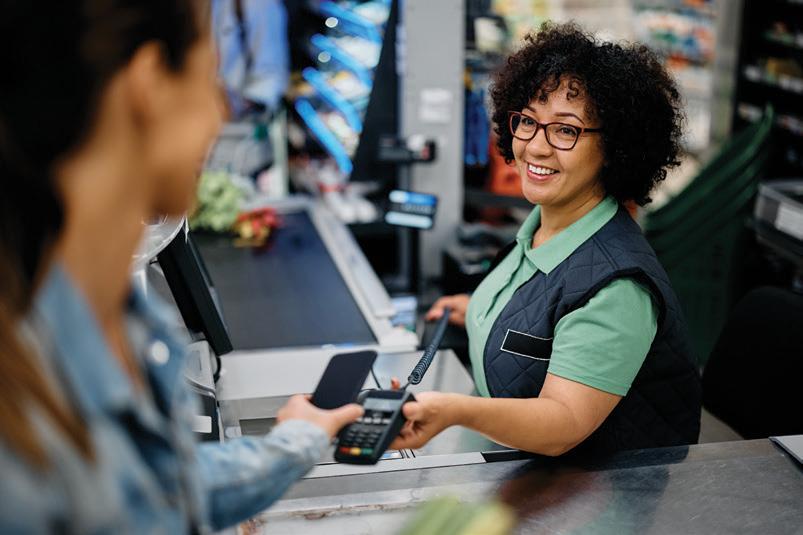




NACS welcomes the following companies that joined the Association in August 2024. NACS membership is company-wide, so we encourage employees of member companies to create a username by visiting convenience.org/ create-login. All members receive access to the NACS Online Membership directory and the latest industry news, information and resources. For more information about NACS membership, visit convenience.org/membership
RETAILERS
7-Eleven MWFOA Chicago, IL
Aura Management CO Walnut Creek, CA
Blue Water Development Ocean City, MD Bwdc.com
Crescent Market Snoqualmie, WA www.crescentmarket.com
Diaz Inc. Metairie, LA
Donna’s Travel Plazas Inc. Tulalip, WA
For Convenience Sake Ltd. Kingston 19, Saint Andrew, Jamaica
Golds Gym Dallas, TX
Gonzalez & Jaquez LLC El Paso, TX
Grand Petroleum Inc. Concord, CA
Greg’s Markets Moundsville, WV
Idleyld Retail LLC dba Idleyld Trading Post Idleyld Park, OR www.idleyldtradingpost.com
JAMGAS Kingston, Jamaica Jamgasltd.com
Junction Station LLC Albany, KY
LDH Enterprise dba Express Centre Providenciales, Turks and Caicos Islands
Lolo Creek Operations Lolo, MT
LV Petroleum Las Vegas, NV
Major Oil LLC Vestavia, AL www.majoroil.co
Miller Oil Co. dba Triple M Sinclair Culbertson, MT
Punto Ideal Great Neck, NY
Raj Petroleum Westerlo, NY
Riverbend Co-operative Ltd. Outlook, Saskatchewan, Canada
Roceli Consultores SA de CV San Salvador, El Salvador
Rolling Hills Travel Center Corning, CA
Sunrise Vending LLC Corpus Christi, TX Sunrisecanteenvending.com
Three Sons and a Dog Inc. Northridge, CA
Workman’s Travel Centers Alma, AR
Y Road General Store Linn Creek, MO www.yroadeats.com
Yogi Food Mart Inc Sloansville, NY
Zaz Food Store Ciudad de Panama, Panama www.zaz.com.pa
SUPPLIERS Acchroma Cleveland, OH
Alc-A-Chino Basking Ridge, NJ www.alcachino.com
Apex Systems Salt Lake City, UT www.apexsystems.com
Arity Chicago, IL Arity.com
Associated Warehouses Anaheim, CA awilogistics.com
Beverage Ranch Fort Worth, TX www.beverageranch.com
Blu Brands Group LLC Katy, TX www.blu-brands.com
Brother International Bridgewater, NJ www.brother-usa.com/business
Caruso & Co. www.carusoandco.com
CoffeeTree Group Troy, MI
Coolrite Refrigeration Inc. South San Fransico, CA
Distro365 Newbury Park, CA Distro365.com
EnergiTech Services Kimberly, WI
Everest Health and Nutrition Valencia, CA
Owned media networks serve native content, produce valuable data, and drive profits
Continuing from last month, we explore how c-stores are leveraging a multichannel media mix to create immersive, branded experiences that go beyond traditional ads.
John’s phone buzzes as sunlight filters through his blinds. He opens the OptiMart app, where a featured video catches his eye—breakfast ingredients being tossed like a culinary show. Below, he sees an invitation to explore the OptiMart Media Hub, packed with local news, product stories, and curated content.
With a few taps, he places his breakfast order. As he scrolls, a livestream pops up, showcasing vibrant shots of farmers presenting their freshest produce. The vivid scenes create a stronger connection between John and the people behind the products. Minutes later, John grabs his keys and heads to OptiMart.
At his OptiMart, forecourt screens shift from static ads to dynamic video feeds featuring promos, local events, and even a look at the brand’s history—almost like tuning into a personalized TV channel. Inside, interactive displays mix trivia, live sports scores, and community highlights. His loyalty app ensures personalized ads and content follow him across digital displays, deepening his connection at every touchpoint.
Later, a notification invites him to OptiMart Originals—a series of short, engaging videos available exclusively in-app. While waiting for coffee, John watches a sponsored clip produced by a local business that paid OptiMart for space on its platform—another revenue stream enabled by the media ecosystem. OptiMart’s media network enhances every step of the customer journey. It blends entertaining content, native ads, and offers that feel natural. The app captures valuable data from receptive customers, serves dynamic media, and delivers interactions that drive sales, deepen loyalty, and attract sponsors. John’s experience shows how c-stores running owned media can do more than sell products—they can own attention, shape habits, and turn casual visits into powerful, monetizable moments.
C-store results using media networks for personalized content and targeted promotions:
• 6% increase in basket size
• 22% higher revenue
(NACS State of the Industry Report)
Get the whitepaper shaking up the industry. Scan the QR code to get a look into the future now.

Exterity LLC Kansas City, Missouri Trustexterity.com
Feastables Dallas, TX
Frankford Candy & Chocolate Company Philadelphia, PA
Glimpse Wixom, MI www.glimpseanalytics.com
Global Military Marketing LLC Gulf Breeze, FL www.globalmilitarymarketing.com
Gold Road US LLC Laguna Niguel, CA
Granite Telecommunications Quincy, MA www.granitenet.com
GT’s Living Foods Las Vegas, NV Gtslivingfood.com
HBC Lansdale, PA Hbcpackaging.com
Hub Inc. Fenton, MO www.hubtobacco.com
Inmar Intelligence Winston Salem, NC www.inmar.com
Ketone-IQ Miami, FL Ketone.com
King’s Command Foods Versailles, OH Kingscommand.com
Kitestring Bentonville, AR www.kitestring.com
Lucy Goods Los Angeles, CA Lucy.com
MacroCap Labs LLC Longwood, FL Macrocapslab.com
Mile High Overstock LLC Monument, CO
Pastorfrigor S.p.A Terruggia, Piemonte, Italy www.pastorfrigor.it
Plantain Republic Portoviejo, Manabí, Ecuador
Pricer Atlanta, GA www.pricer.com
Prisma Phoenix, AZ www.poweredbyprisma.com
Rich Chicks Bentonville, VA
Sang Foods Corp. New York, NY Eatdrinksang.com
Seneca Direct LLC Eugene, OR
Smackin’ Snacks Minneapolis, MN
SPAR Group Inc. Auburn Hills, MI www.sparinc.com
Specialty Store Services Des Plaines, IL www.specialtystoreservices.com
Taste Strategy LLC Chalfont, PA www.tastestrategy.com
The Wine Group Dallas, TX
Washburn Monticello, MN www.washburnpos.com
Weber Inc. Kansas City, MO
WhiteHawk Retail Solutions Granville, OH www.teamwhitehawk.com
2025
JANUARY
Conexxus Annual Conference
January 26-30 | Loews Ventana Canyon Tucson, Arizona
FEBRUARY
NACS Leadership Forum
February 11-13 | The Ritz-Carlton Amelia Island, Florida
NACS Convenience Summit Asia
February 25-27 | Conrad Tokyo Tokyo, Japan
MARCH
NACS Day on the Hill March 10-12 Washington, D.C.
NACS Human Resources Forum March 24-26 | Hutton Hotel Nashville, Tennessee
APRIL
NACS State of the Industry Summit April 08-10 | Hyatt Regency DFW International Airport Dallas, Texas
OCTOBER NACS Show October 14-17 Chicago, Illinois
For a full listing of events and information, visit www.convenience.org/events.
































The
retailer raised $573,150 for the Michael J. Fox Foundation from its 11th annual Run for Research 5K race.
RaceTrac hosted its 11th annual Run for Research 5K race on September 14. As in past years, 100% of registration fees benefited The Michael J. Fox Foundation’s (MJFF) global research programs seeking better treatments and a cure for Parkinson’s disease. A total of 2,031 registrants helped raise $573,150 from the race alone.
Combined with the $770,264 raised during April’s in-store fundraising and coffee sales, RaceTrac has helped bring over $1.3 million to The Michael J. Fox Foundation.
“We know that Parkinson’s affects nearly 30,000 people in Georgia, and its impact is devastating for those living with the disease and for their loved ones,” said Melanie Isbill, chief brand officer at RaceTrac and member of
MJFF’s board of directors since March 2021. “This past year has been a very exciting time for the foundation, with the announcement of new tests, new therapies and new legislation bringing hope that a cure is truly within reach.”
RaceTrac’s Run for Research is part of the company’s wider RaceTrac Gives Back initiative, which supports several causes. Each year in April during Parkinson’s Awareness Month, RaceTrac guests can add $1 to their in-store purchases or select a $1 candy bar to support MJFF.
Donations to MJFF have enabled researchers to discover a biomarker breakthrough that detects pathology in spinal fluid not only of people diagnosed with Parkinson’s, but also in individuals who have not yet shown clinical symptoms of the disease. Each year, there are
approximately 90,000 new Parkinson’s diagnoses added to a list of over one million Americans currently living with the disease, including RaceTrac executive chairman emeritus and current MJFF patient council member Carl Bolch Jr.
“Recent scientific leaps like the discovery of a biomarker and the bill passage of The National Plan to End Parkinson’s Act have made this an extraordinary period for Parkinson’s research,” said Veronique Enos Kaefer, MJFF’s vice president of philanthropy.
“The RaceTrac team has long been a critical partner through their dedication to the foundation’s mission, both through commitment to mobilize the community to take action and through generous spirit helping to speed high-impact research programs.”
Every year, the convenience retail industry dedicates billions of dollars to advancing the futures of individuals and families in our communities. The NACS Foundation unifies and builds on NACS members’ charitable efforts to amplify their work in communities across America and to share these powerful stories. Learn more at www.conveniencecares.org.
1 Throughout the month of July, guests at EG America’s Certified Oil, Cumberland Farms, Fastrac, Kwik Shop, Loaf ’N Jug, Minit Mart, Quik Stop, Sprint Food Stores, Tom Thumb and Turkey Hill stores could donate $1, $5 or an amount of their choosing to the American Cancer Society. EG America then matched the amounts raised by the top stores to increase the donation total.
2 In August, Maverik hosted a community event at a newly rebranded store in Colorado
Springs, Colorado. During the event, Maverik presented a $25,000 donation to Mt. Carmel Veterans Service Center in recognition of its critical work supporting military, veterans, individuals and families in Colorado Springs and surrounding areas. Maverik’s donation will help Mt. Carmel fill its five food pantries in Colorado Springs and nearby rural areas.
3 Rutter’s Children’s Charities donated $50,000 to the nonprofit Veterans Outreach of Pennsylvania. The funds are dedicated to building a tiny home and providing individualized services for a veteran facing homelessness.
Veterans Outreach of Pennsylvania built and is now operating Veterans Grove in Harrisburg, Pennsylvania, to assist those in need of housing after transitioning from military to civilian life.
4 TravelCenters of America raised nearly $300,000 for St. Christopher Truckers Relief Fund (SCF) and TAT, formerly Truckers Against Trafficking, through two separate fundraisers this summer. The retailer’s annual charity golf event held in August “was TA’s most successful event ever,” raising nearly $200,000 that will be

distributed evenly between the two nonprofits.
The company also held a roundup campaign in June and July at participating TA, Petro and TA Express locations, which raised $89,000. That money will be donated to SCF, which provides financial assistance to professional drivers out of work due to illness or injury.
5 To celebrate its 60th anniversary, Love’s Travel Stops donated $6,000 to schools or school districts in each of the 63 cities it operates in, for a combined total donation of $378,000 across five states. Local leaders and store team members in Oklahoma, Kansas, Utah, Colorado and Arizona selected the local school/district recipients.
6 Wawa brought its “Cheers to Classrooms” initiative to the midAtlantic to celebrate going back to school, making the program available in all Pennsylvania, New Jersey, Delaware, Maryland, Virginia, North Carolina and Washington D.C. stores from September 2-15. The annual initiative allows teachers and school staff to get a free hot coffee or fountain drink.






Here’s what all retailers need to know about the FDA’s Food Traceability Rule.
BY DOUG KANTOR AND MARGARET HARDIN MANNION
In November 2022, the U.S. Food and Drug Administration (FDA) announced a rule on food traceability. If you haven’t heard about it, that isn’t surprising—most people haven’t. That partly has to do with the quiet, behind-the-scenes way that the federal government often works, and partly to do with the fact that the required rule compliance date set by FDA isn’t until January 20, 2026.
Why would the FDA give everyone more than three years to comply with the rule? Therein lies the story of why
most haven’t heard of the rule—and why it’s such a problem.
But before we begin to tell it, it helps to know what the rule does. According to the FDA , anyone that makes, processes, packs or holds foods on the agency’s Food Traceability List will need to collect and maintain data about those foods. The list includes foods such as “fresh cut fruits and vegetables, shell eggs and nut butters, as well as certain fresh fruits, fresh vegetables, readyto-eat deli salads, cheeses and seafood products.” In particular, the data will
have to trace the food all the way back through the food supply chain to its origin. The idea is to aid in product recalls and gather the information needed for food safety measures.
However, the level of detail retailers will be required to collect under the rule is staggering. It requires businesses to track foods on the Food Traceability List all the way down to the lot level. That doesn’t mean following it by the truckload or pallet—the FDA wants retailers to know the information on an individual hard-boiled egg
The FDA is asking for information that doesn’t exist.
that gets chopped and put into a salad. And if asked, the retailer must provide the required data on that hard-boiled egg to the FDA within 24 hours. If you make and sell one salad per week, that might not be a big deal. But in reality, compliance won’t be sustainable for many businesses.
In addition to the dramatic volume of data required on many different food products, the rule simply does not match how food distribution works in the United States today. There are no

tributed to its store locations, there’s even more data to be collected and maintained. Put simply, retailers won’t be able to escape the FDA’s rigorous and stringent data requirements.
The difficulties of complying with this rule are so overwhelming that the FDA gave everyone more than three years to become compliant. If you’ve watched government regulators over time, you have a sense of how significant that is. Rules with lead time that long don’t come around very often, which signals that compliance is going to be very difficult.
standards currently in place that would ensure interoperability among traceability systems throughout the country’s food supply chain. Many of these foods come to central distribution hubs on their way to distributors and processors. Information about where each lot of food came from and is then going simply isn’t kept at that level of the distribution chain. The FDA is asking for information that doesn’t exist.
Retailers might read this and say: Manufacturers and wholesalers will handle this, so it’s not my problem. Unfortunately, not only are retailers independently responsible for gathering and keeping data on the foods that they sell, but if they make or “transform” any foods themselves (including something as simple as chopping fruits or vegetables to put in a packaged cup), they’re then treated like a processor and would have heightened record-keeping responsibilities. Oh, and if a retailer operates its own warehouse or central kitchen where these foods are handled and dis-
But even with three years, many experts question whether a majority of the market will be able to comply in time. The FDA itself even seems to recognize this issue and has stated that routine inspections under the rule will not begin until 2027 “to give covered entities additional time to work together and ensure that traceability information is being maintained and shared within supply chains per the requirements of the rule.” Additionally, the FDA notes that it plans to take an “educate before and while we regulate” posture as it begins implementing the food traceability requirements.
NACS has been working closely with the grocery industry and others to try to deal with the problems of this rule. NACS supports the Food Traceability Enhancement Act (H.R. 7563), legislation in the House introduced by Reps. Scott Franklin (R-FL), Sanford Bishop (D-GA) and Jimmy Panetta (D-CA). This bill would require FDA to conduct at least nine pilot projects in coordination with retailers and others in the food industry to identify and evaluate the
effectiveness and feasibility of food tracking technologies. The compliance date of the traceability rule would be delayed to two years after the nine pilot projects were completed.
Separately, the annual agriculture spending bill in the House of Representatives includes language that would require the FDA to conduct at least four pilot projects on the food traceability rule, document that the rule can be followed and would be effective in achieving “low-cost” food tracing, and then also give two years following the last documented pilot project for businesses to come into compliance with the rule. There are serious doubts as to whether the FDA could make that showing. If it can, then there would likely be technology or rule fixes allowing it to happen.
Unfortunately, no one can rely on the language in the bill until it is law. As of this writing in early September 2024, it still hasn’t been passed. And that means, just in case, that it’s time for retailers to pay attention to the food traceability rule and start figuring out how it applies to your operations and how, if possible, you could get into compliance with it.
NACS puts together food safety resources to help comply with this and other rules. There are also other resources out there (nothing like a crisis to focus consultants’ attention). So, now is the time to get started. NACS will do what it can to delay and change these ill-considered rules. But now that you know, it’s better to get ready today than be sorry later.


Doug Kantor is NACS general counsel. He can be reached at dkantor@ convenience.org.
Margaret Hardin Mannion is the NACS manager of government relations. She can be reached at mmannion@ convenience.org.
NACSPAC was created in 1979 by NACS as the entity through which the association can legally contribute funds to political candidates supportive of our industry’s issues. For more information about NACSPAC and how political action committees (PACs) work, go to www.convenience.org/nacspac. NACSPAC donors who made contributions in September 2024 are:
Patrick Abernathy
Ignite Retail Technology
Wynne Barrett
Jera Concepts dba Supplyit
Frank Beard Rovertown
Stace Benu
Executive Leadership Solutions Inc.
Steve Brady Techniche
Ronald Brown BF Holdings, LLC dba Latitudes
Philip Chamblee
Mississippi Petroleum Marketers & C-Store Association
Michael Deal
Moyle Petroleum Company
David Ezell
Conexxus
Rob Forsyth
FKG Oil Company dba Moto Mart
Angela Gearhart
Nittany Oil Company dba Minitmart
Varish Goyal
Loop Neighborhood Market
Matthew Hanson
Black Buffalo Inc.
John Harris
Coulson Oil Company dba Road Runner
Chris Hartman
Rutter’s Holding Inc.
Tommy Hunt
E-Z Stop Food Marts Inc.
AJ Jha
Tustin Arco
David Jordan
Jordan Oil Co. Inc.
Paul Kern
Invenco By GVR
Steve Kimmes
Kimmes Enterprises LLC dba Country Stores of Iowa
KC Kingsbury NACS
Pat Lewis
Oasis Stop N Go LLC
Sean McCaffrey GSTV
Steve McKinley
Urban Value Corner Store
Jimmy Morgan J.R. Morgan Oil Company Inc.
Jordan Nicgorski Juul Labs
Gabe Olives
W. Capra Consulting Group LLC (Axonet)
Rick Sales Abierto Networks LLC
Nav Sandhu NACS
Kay Segal
Business Accelerator Team
Rajeev Sharma
VideoMining LLC
Carrie Stojack
Casey’s General Store Inc.
Eva Strasburger
StrasGlobal
Roy Strasburger
StrasGlobal
Van Tarver
InStore.ai
Nick Triantafellou
Weigel’s Stores Inc.
Chuck Young
W. Capra Consulting Group LLC (Axonet)














Name of company:
Shawnee Grocery
Year founded: 2007
# of stores: 1
Website: www.facebook.com/p/ShawneeGrocery-100042217731837
Shawnee Grocery’s secondgeneration owners are building the business for the future.
BY SARAH HAMAKER
Walk into Shawnee Grocery in Stout, Ohio, and chances are high you’ll see owner Carrie McCaw, her husband Zachary or one of their three kids working behind the counter. “My parents bought the store in 1997 and I loved to be here as a girl,” McCaw said. “This convenience store is in my blood and our eight-year-old daughter loves it as much as I did at her age.”
The history of the site goes back further than the McCaw family—the concrete was poured for the original foundation in 1941. “My parents took over the store for a while before leasing it half a dozen times,” she said. “It’s always been a convenience store, and my parents added gas, diesel and kerosene.”

When her parents decided to retire in 2007, McCaw asked to take over the business. “I wanted a chance to prove I could make it work after so many others who leased it didn’t,” she said. “It has made a profit every year since then.”
One of McCaw’s first challenges was figuring out what to carry in the store. “Since we’re in a rural area near a campground, we knew we needed to be a one-stop shop,” she said. Shawnee Grocery stocks a wide variety of items, from hardware to groceries, including plumbing fixtures, green beans, stuffing, flour and baking soda among the vast array of products. “Since town is about 30 minutes away for most people, we carry a little bit of everything,” McCaw said.
The heart of the store is its deli counter with fresh-sliced meats and cheeses. “Nothing is prepackaged—we slice it right in front of the customer,” McCaw said, adding that in the summer, deli sandwiches are made with fresh

tomato slices from the store’s outdoor plants. The deli also sells house-made salads, like macaroni, potato, ham and chicken, and the grill serves burgers, grilled chicken, steak hoagies, plus fish and ribs. For breakfast the store makes burritos, breakfast sandwiches and breakfast bowls. A pizza oven bakes fresh pies, and the store makes homemade cheesecake, too.
In addition, customers can pick up propane, ice, oil, candy, dog food and treats, chips, beer, wine and low-proof liquor. “We sell quite a bit of dog food in the bigger bags, which was surprising for us,” she said. Tobacco, vape and CBD round out the selection. “But if there’s something a customer wants that we don’t have, I’ll special order it for them,” McCaw said. “They’re always really excited when we tell them the item is now in stock.”
The family lives in an apartment above the store, so locals have gotten to know them well. “Our kids—a 10-year-old boy, an 8-year-old girl and a 4-year-old boy—are in and out of the store since we homeschool them,” McCaw said. “They help out by running the register or greeting customers. Often, they teach some of our new employees how to count back change.”
The employees are part of what makes Shawnee Grocery popular with tourists and locals alike. “One thing I do to help make our workers’ lives easier is publish the shift [schedules] at least a month in advance, so they can make plans for their lives and don’t miss important family events,” McCaw said. “That has helped with retention a lot and made the work atmosphere much more like a family.”
McCaw supports the community through raffle donations and setting out “giving jars” for customers to donate to charitable organizations. Shawnee Grocery also regularly supplies the can-
Carrie McCaw, owner of Shawnee Grocery, credits one simple thing to her success—listening to her customers. “Really listen to hear what they want and get all the feedback you can,” she said. She makes a point to work a shift at least once a week in her store to interact with customers personally.
“A lot of people in this business are absent owners—they’re far away from the store and they’re probably not hearing the feedback from customers, employees and managers often enough,” she said. “By working here regularly, I hear firsthand what customers are saying about our store as well as how our employees are doing. It’s helped us keep our customers happy and coming back.”
dy passed out at the local parades. The store has an active Facebook page with a growing following. “We post on it regularly, and usually anytime I post about a product, within a few hours someone’s coming in for that item,” McCaw said.
She plans to pave the gravel parking lot and perhaps expand it into the adjacent property to accommodate the growing number of customers who stop by the store. “A paved lot would provide more uniform spaces and that would help with parking,” McCaw said.
Overall, her greatest desire is for “customers to find everything they’re looking for and for the clerks who ring them up to be kind to them,” she said. “That’s what we strive to be for our customers.”

Sarah Hamaker is a freelance writer, NACS Magazine contributor, and award-winning romantic suspense author based in Fairfax, Virginia. Visit her online at sarahhamakerfiction.com.
Ideas 2 Go showcases how retailers today are operating the convenience store of tomorrow.
To see videos of the c-stores we profiled in 2023 and earlier, go to www.convenience.org/Ideas2Go

From pickles to implosions, it was a memorable four days in Las Vegas.
BY GUEST EDITOR JEFF LENARD


How do you define the big takeaways of the NACS Show in a little more than 2,000 words? Well, for one, you write a short intro and get to the point, sharing some of the big themes that we saw— and heard.
Jeff Lenard guest editor
During the NACS Show, the legendary Tropicana Las Vegas was razed in a planned implosion during the early morning hours of October 9, waking up light sleepers across the city. The Tropicana wasn’t the only thing demolished in Las Vegas during the NACS Show. The four-day event set new records for attendance (26,124) and Expo size (437,500 net square feet), and while it can’t be quantified, it also arguably set the record for most positive vibes to come out of a NACS Show. Here are some of the big trends that I saw.

At the 2017 NACS Show, then NACS Chairman Rahim Budhwani said, “C-store doesn’t just stand for convenience store. It also stands for community store,” reflecting how much the industry has embraced working with local and national organizations to better communities. That community spirit is just as strong now, but with the rapid acceleration of foodservice, which now accounts for more than 26% of in-store sales, it might be time to modify that quote: “C-store doesn’t just

stand for convenience store. It also stands for culinary store.”
But to truly operate as a culinary store, you have to be a fanatic about quality. Restaurant owner and founder of the popular “Gas Station Tailgate Review” video series Stafford Shurden says that he focuses on grandma as a target audience at his restaurant. A sign above the kitchen notes, “Treat everybody who walks in here like your grandma.” In particular that extends to making sure that ingredients are fresh and tasty. In the Education Session “Transforming Your Menu like a Restaurant,” Shurden said he has a simple question to staff considering new menu items and ingredients: “Would you serve that to your grandma?”
Food safety also is critical to growing foodservice sales, and that was the focus during the co-located NACS Food Safety Forum. More than 70 attendees discussed cultivating organizational behaviors that can enhance and protect their teams, customers and brand, as well as collaborative solutions that address safe food-handling challenges.
The sights (and smells) on the Expo floor also made the industry’s culinary focus clear, and that’s something celebrity chefs David Chang and Andrew Zimmern also experienced. More on that later.


December 3-4, 2024
Hyatt Regency DFW International Airport, Dallas, TX
Join us at the inaugural NACS Loss Prevention and Safety Symposium, the only industry event dedicated exclusively to the latest strategies, insights, and tools that help convenience retailers, wholesalers, and suppliers protect their businesses.


In just 24 hours, you’ll dive into discussions that address today’s most pressing safety and loss prevention challenges, from protecting your employees and customers to mitigating financial and operational risks.

Learn de-escalation techniques and preparedness strategies to mitigate violence while addressing the needs of vulnerable populations.
Explore protection strategies for fuel pump manipulation, ATM attacks, cyber threats, and supply chain safety with a total company approach.
Understand how technology and collaboration with local partners can improve site security and community safety.
www.convenience.org/SaferStores



Ninety-seven percent of executives say that artificial intelligence will fundamentally change business over the next five years, noted Brian Gray, global mobility retail lead at Accenture, during a NACS Show General Session. According to Gray, we’ve entered the third phase of AI. Phase 1 began in the 1950s when machines could replicate tasks faster than humans; phase 2 began in the early 2000s when machines could learn faster than humans. Phase 3, which started a decade ago, is when machines can generate content faster than humans—which is why it’s now known as generative AI.
Gen AI is advancing at an unbelievable pace … and it’s just getting started, noted Gray. And that may explain why AI was the focus of multiple Education Sessions as well, which looked at simple use cases—from recognizing out of stocks, to safety, to employee feedback to predicting the personality and needs of a
driver based on cues that go way beyond just the make and model of the vehicle.
AI won’t replace human functions. Instead, it will allow people to spend more time on the things that they want to do at work, said Gray. His top piece of advice to retailers: Get started, and at least test it out and learn more about it.
Meanwhile, fellow General Session speaker Victor Paterno, president and CEO of Philippine Seven Corp. and 2023-24 NACS Chairman, told retailers to invest in their people. “Unless you’re a really weird guy, you’re not going to have a relationship with an AI. … Tech companies already know more about your customers than you do.” But tech companies don’t have that personal relationship that you have with your customers—and they crave that. His other advice to retailers: Define the problem you want to solve. Then find the technology that best does that. “If you know what problem you want to solve, there is a solution out there,” said Paterno.



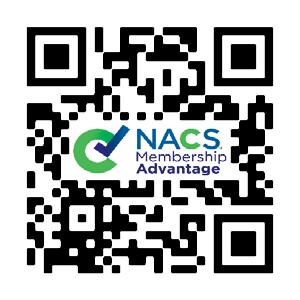
At each NACS Show we celebrate our current and past leaders on recognition walls. Three years ago, I noticed a woman intently staring at the wall showcasing past chairmen, paying particular attention to 1997-98 NACS Chairman Bob Gordon.
I knew why because I know the backstory: Bob’s son Mike is bass player in the band Phish, which Rolling Stone called “the most important band of the ’90s.” The band remains a popular touring band and earlier this year played a slate of shows at the Sphere in Las Vegas.
Anyway, I talked more to the woman and found out that she was planning to share a picture of Bob on a Phish message board. And that gave me an opportunity to tell her a little more about NACS Chairman Bob Gordon and Phish, and how they tie together at the NACS Show.
Being a proud father, Bob’s chairman’s address in 1997 featured lyrics from a Phish song written by his son. Here is a snippet from Bob’s speech:
In order to think about where we’ve been, and where we are, I found insight in the music of that precursor of the next generation, the rock band Phish.
Let me read a few lines from “Scent of a Mule” to show you what I mean:
“Kitty Malone sat on a mule, Was riding in style. When suddenly like the sound of a buzzard’s breaking, Kitty felt laser beams being fired at her head.
She said, ‘I hate laser beams, And you never done seen me askin’ for a UFO in Tomahawk County.’”
This industry is something like Kitty, riding in style through Tomahawk County, when suddenly everything’s different. The fear of being scalped was largely under control, but now they’re firing laser beams at her head … from a UFO to boot.
We’ve got a similar problem. The world is changing rapidly, fundamentally, and in ways we never could have imagined only a few years ago.
While the lyrics are pretty far out there, Bob’s message rings true. The world is changing faster than ever, and the NACS Show still is the place to define how to stay ahead of change.
Artificial was the big word in intelligence, but with ingredients the opposite was true. An increasing number of products touted “real” and “natural” ingredients on the Expo floor. Countless beverages featured natural flavors, colors and, if caffeinated, naturally sourced caffeine. If a product had flavoring, it was often from fruit juice or pulp.
Snacks similarly touted natural flavors and colors, and descriptors like “better for you,” “plant-based” and “no added sugars” were common on packaging. There were too many to list here, so I won’t.

More than 26,000 people attended the NACS Show, a record-breaking number.






















































































In April, NACS Magazine reported on the results of a national consumer survey conducted by NACS that found that consumers were concerned about crime and these concerns could significantly change their shopping behavior (“What Consumers Say About Prices, Crime and C-Store Jobs”). Six months later, it’s clear that the industry has taken note. One Education Session focused on creating a safe store environment for employees and guests, while another looked at how to defend against cyberattacks. On the Expo floor, a slew of loss prevention tools were on display, from solutions to minimize loss to how AI can help predict potential threats before they even happen.
In addition, security was a focus in committee meetings throughout the week, including the Joint Session for State Association Executives, in which attendees shared their strategies. In Arizona, Proposition 312 (yesprop312. com) is on the ballot, which would allow property owners to request a refund equal to their property tax liability for any expenses incurred for illegal camping, littering and other nuisances. Meanwhile, last year Florida tightened penalties for retail fuel theft with SB 1150. NACS recently hosted a webinar on de-escalation techniques for retailers (convenience.org/webinars) and has a Loss Prevention & Safety Symposium scheduled for December 3-4 in Dallas.




























































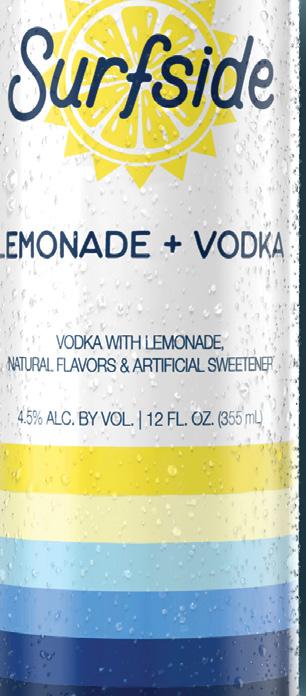





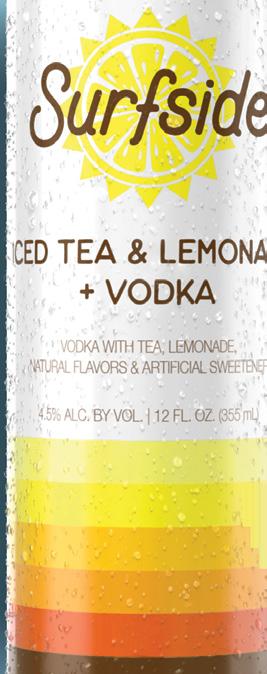


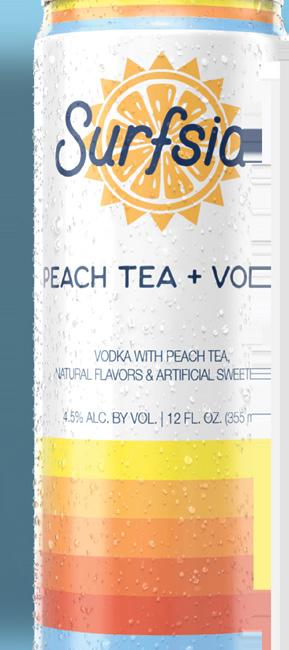

























































A quick search on the NACS Show app found more than a dozen exhibitors that featured pickles. But it was even more astonishing to see how many traditional items now have pickle flavoring. Bolthouse Fresh introduced packaged carrots that include a dill pickle seasoning pack, essentially changing the taste from one vegetable to another. And Heinz somewhat did the same, showcasing a new pickle-flavored tomato ketchup.
Pickle juice also was flowing in the Expo. The company Pickle Juice displayed pickle juice shots that aide with workout recovery and stop muscle cramps. And Van Holten’s offered Pickleback Mixer that can be used

in cocktails and beers. The company also highlighted a line of pickle pouches that featured unique partnerships (“Rick and Morty,” a TV show) and flavors (Warheads Extreme Sour).
The most creative pickle partnership might be Vlasic’s Pickle Balls, dill-flavored puff balls whose name also aligns with one of the fastest growing recreational sports in the country. And, that alignment goes beyond a clever name: One of the stops on the Association of Pickleball Players tour is called the Vlasic Classic.
Pickles, as a sticker handed out in one booth noted, truly are “a big dill.”


































































































































































































































ONE PLUS ONE IS MORE THAN THAT
The average shopping time in convenience stores is under four minutes. For most customers, that means quickly finding a couple products to solve their problems, usually related to hunger or thirst. But what if one product served multiple purposes? A few years ago, energy was the rage, whether in beverages, candy or even sunflower seeds. Energy is still the rage, with energy drinks, punches and even V8 Plus Sparkling Energy, which came in a variety of flavors, but, shockingly, not pickle.
Protein was also huge, and booths showcased, of course, protein bars and also protein cheese crackers (Quest), popcorn (Kudo) and Reese’s One, a take on the traditional peanut butter cup that has extra protein.
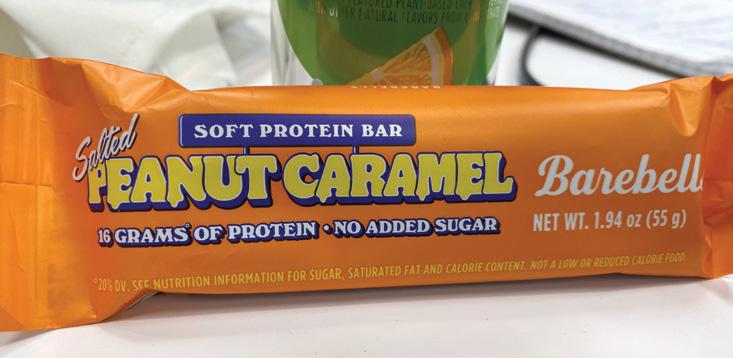
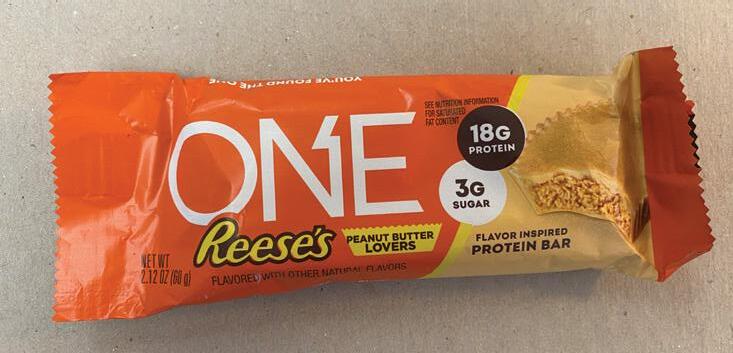

One plus one also meant brands were leveraging their names into new directions. Hawaiian Punch isn’t just a beverage; it’s also a candy chew. Beermaker Guiness had its name on Guiness Steak Cuts jerky. And if there’s a beverage manufacturer with jerky, there should be a jerky maker with a beverage, right? Well, look over there—it’s Jack Link’s Bloody Mary mix. Among the three flavor options, naturally, was dill pickle.
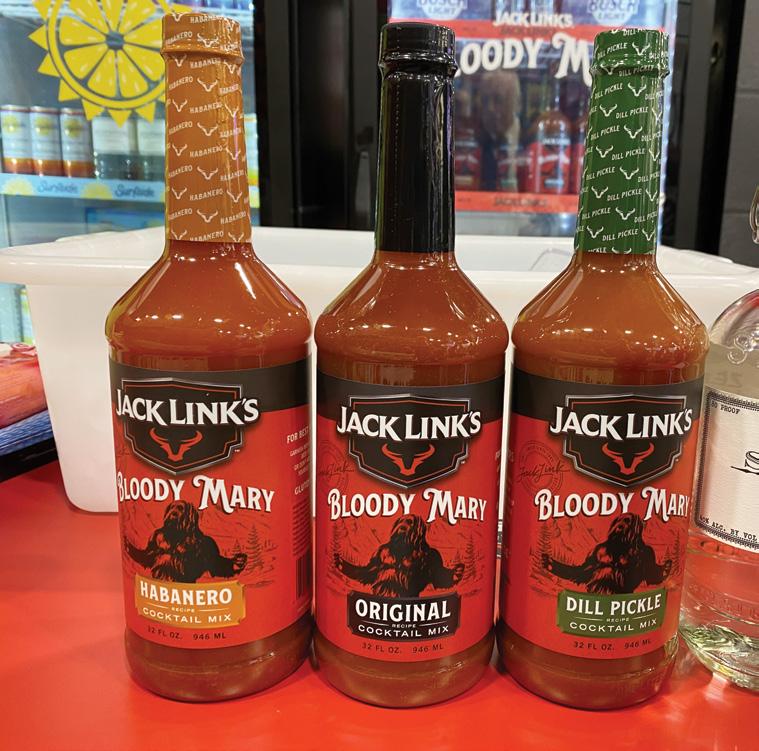


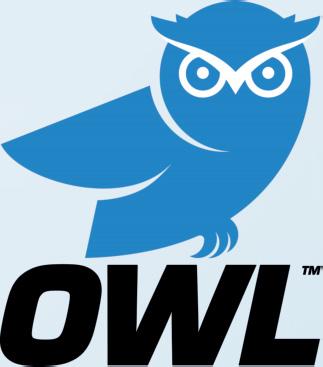



OWL Services would like to extend a heartfelt thank you to everyone who attended the 2024 NACS Show and visited our booth. Your engagement and interest in our solutions made the event a success, and we truly enjoyed the opportunity to connect with so many industry professionals. We’re excited about the future of retail and fueling services, and we look forward to continuing the conversation and working together to drive innovation.

Keynote speaker sponsor
We were thrilled to sponsor this years keynote speaker Admiral William H. McRaven.
Hosted happy hour
The OWL hosted happy hour was a huge hit! Thank you to everyone who connected with us at this event.
Exhibition booth
We loved the opportunity to continue building new relationships and strengthening existing ones.






























What’s every kid’s favorite memory of visiting a Smithsonian Institution location in Washington, D.C.? No, it’s not the history; it’s the freeze-dried ice cream in the gift shop. Someone finally took note and decided candy would taste better if it were freeze-dried.
Visiting stores this summer for Ideas 2 Go video shoots, we could see the trend already

taking off, and it’s exploded (as freeze-dried stuff naturally does) into a much bigger trend. Exhibitors said kids (and adults) love it because it’s fun. I’m not going to argue with that. It’s also no longer a fad and appears to be a sustainable trend. One booth was taking seasonal orders that included freeze-dried marshmallow treats for Easter.
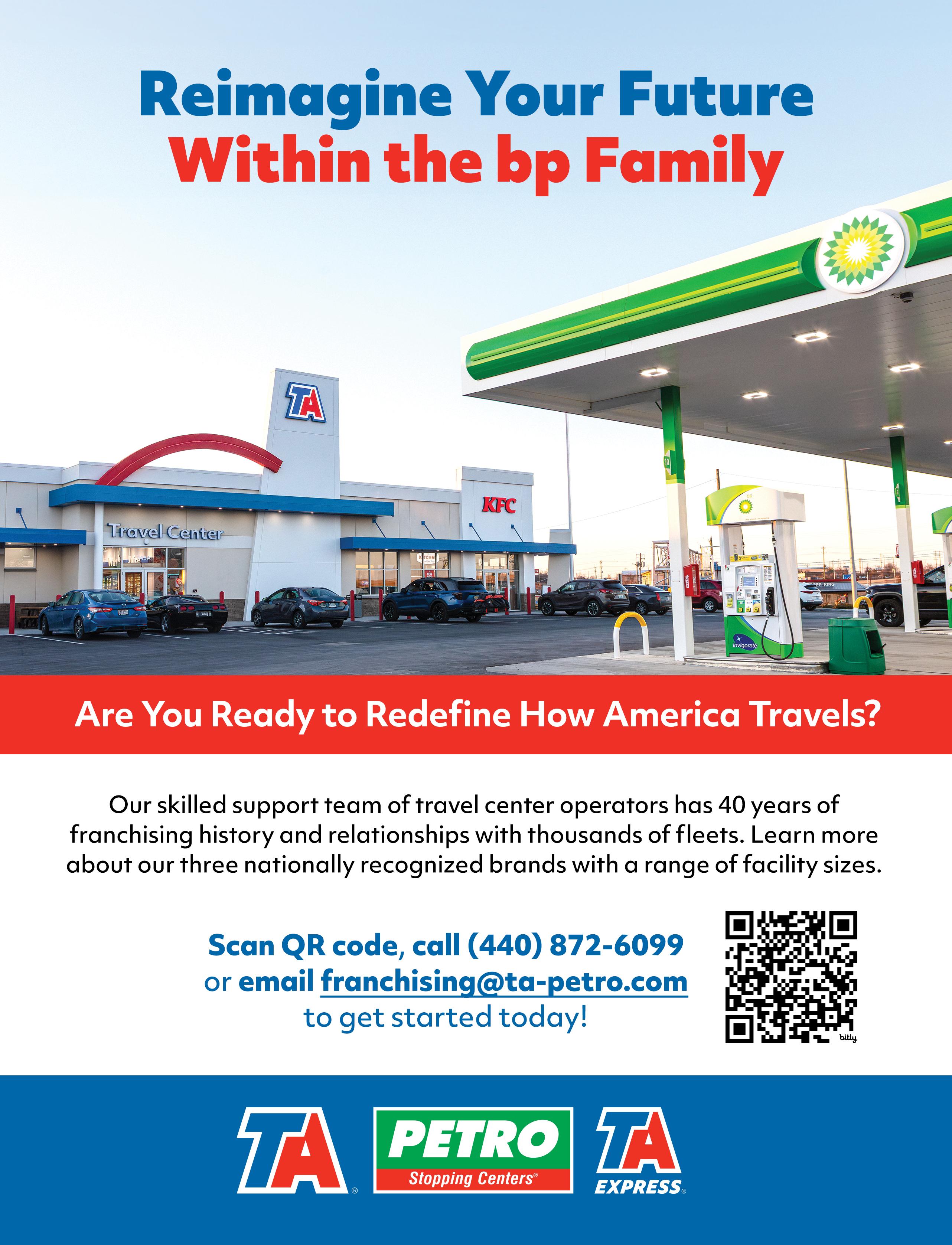


Do you think David Chang has a competitive streak? He showed up 20 minutes early for rehearsals to do an extra practice round because he wanted to beat chef Andrew Zimmern in the friendly cookoff. Even though we explained that, just like David Letterman’s Stupid Pet Tricks bit, “This is not a competition. Please, no wagering.” But it’s Vegas, so all bets are off. (Or is it “on”?) - Jeff Lenard, guest editor
Getting back to foodservice, chefs Andrew Zimmern and David Chang celebrated the role that food in convenience stores plays in everyday life in the October 10 General Session. They also visited the Expo floor the day prior to learn more about the event. And that’s where the magic happened on social media.
Zimmern recorded an Instagram video with Chang in which they noted the NACS Show was the “best convention in Vegas … ever.” Chang added that the Expo was “a place that made him intensely happy.” Chang wasn’t done with the props. Two days later he was still raving about the NACS Show, this time on an episode of his popular podcast, “The Dave Chang Show.” He said, “(The NACS Show) was glorious. I’ve been to a ton of these kinds of food conventions—and conventions in general—but this was one of my most favorite events I’ve ever attended.”
THERE’S MORE WHERE THAT CAME FROM
There were so many other trends that were visible on the Expo floor and in sessions. If you’re going to offer foodservice, you better have a focus on cleanliness, and products showcased how to clean kitchens and bathrooms alike. (Special props to the booth demonstrating urinal guards with a fully functioning Manneken Pis replica.)

Bubble teas, which are almost as fun as freeze-dried candy, are now available in RTD cans. Other global flavors also were big: Tajin, baos and variations of hot were commonplace. I didn’t even mention all the action in the fuels equipment and services area … I’m usually never out of words, but I am out of my word count.
Finally, if you have never attended the NACS Show and this piqued your interest, think about attending next year. Roughly half of all attendees in the October 8 General Session noted that they took that step this year and attended their first NACS Show. And from the buzz throughout the event, it’s likely they felt they made a wise decision.
This NACS Show marked our 17th time in Las Vegas. Unlike common wisdom for blackjack that dictates that you hold on 17, we’ll be back in Las Vegas in two years for the 18th time. But before that, plan on being in Chicago for the 2025 NACS Show, which takes place October 14-17. Don’t wait till the NACS Show to engage with your industry peers through NACS. We have more than a dozen other meetings scheduled over the coming year (convenience.org/events).


















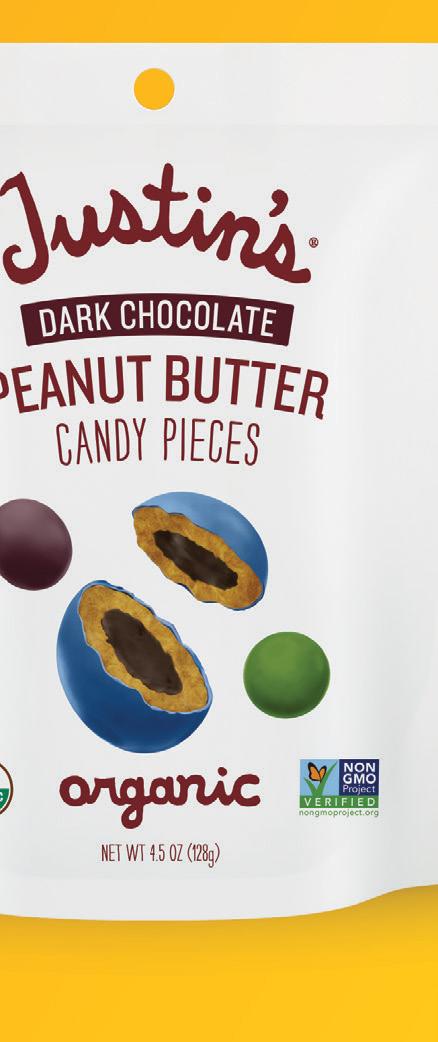






















































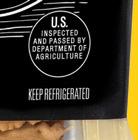







See the new products that your industry peers were most interested in.
the Cool New Products Preview Room is the place to be. Inside, attendees get an inside look at the latest trends in the industry. With the range of products and trends, there was something there for everyone—whether it was an attendee’s first time in the Cool New Products Preview Room or their 15th.
Every year, retail buyers are given early access to the room on the opening day of the NACS Show—a whole day before the Expo floor opens—in addition to early access when the Expo opens to everyone the next day.
The room itself is organized into the same five categories as the Expo floor—facility operations; foodservice; fuel equipment and services; in-store merchandise; and technology.
While visiting the room, NACS Show attendees can scan QR codes for the products on display through the NACS Show mobile app. Once scanned, the app offered guests information about the product and which booth to visit on the Show floor for more information.
There were 300 products on display this year with 12,315 total scans. These were the most-scanned products.
This year, the final top ten Cool New Products are actually the top eleven—there was a tie between two products for the last spot.
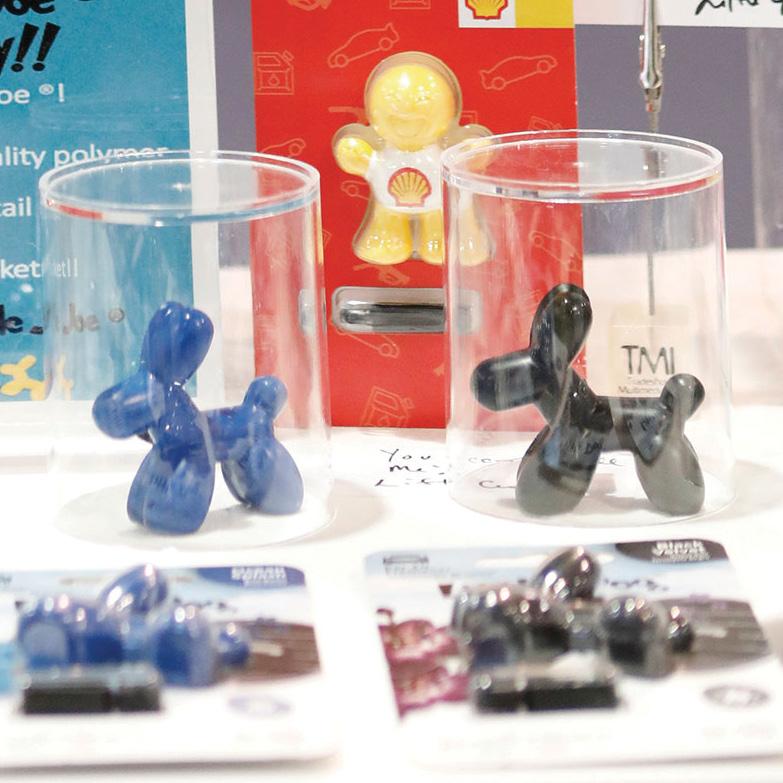

NEW PRODUCTS FROM Reichel Foods



CAPRISUN 12 OZ
RESEALABLE BOTTLE
KraftHeinz

WONDER SWEET SNACKS Flower Bakeries LLC
FLEXESERVE
ZONE LITE— COUNTERTOP Flexeserve


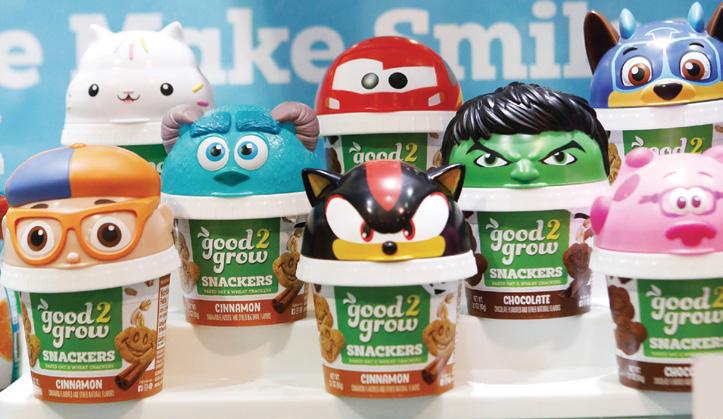
GOOD2GROW CHOCOLATE SNACKERS good2grow

CUSTOMIZED DRINKWARE ET Products Inc.

We launched the then-named Cool New Products Showcase in 2000, which also happened to be my first NACS Show. It looked a lot different then. And so did I.
(TIE) CHAMOY AND TAJIN CANDY Big Ideas Marketing

(TIE) SARGENTO SHAREABLES Sargento Foods Inc.

I don’t know about you, but I had a hard time pacing myself at this year’s NACS Show Expo.
BY CHRISSY BLASINSKY

The 2024 NACS Show broke an all-time attendance record, which IMHO means this industry is moving at the speed of light. There was so much to see this year—from celebrity sightings to new products—that it was impossible for one person to experience it all.
The one and only time I ran a marathon, the advice I got was “leave nothing in the tank.” I limped across the finish line, and if I had $20 on me, I would’ve hailed a taxicab at mile 19. I didn’t give up, thankfully, but that was the last marathon I ran … although this year’s NACS Show felt like my second.
It wasn’t a start-to-finish 26.2, but nonetheless I recorded over 68,000 steps from October 7-10—approximately 30 miles. Y’all are exhausting! But so incredibly worth it.
From A to Z, here’s a snapshot of what I saw at the Expo.
Artificial intelligence:
I wasn’t sure how to visually capture AI, but it should go without saying that AI solutions are a reality.
Air
We all need it!

Beer caves (model not included).

Beverages, as in the evolution of the offer, like this probiotic refresher from Kevita.

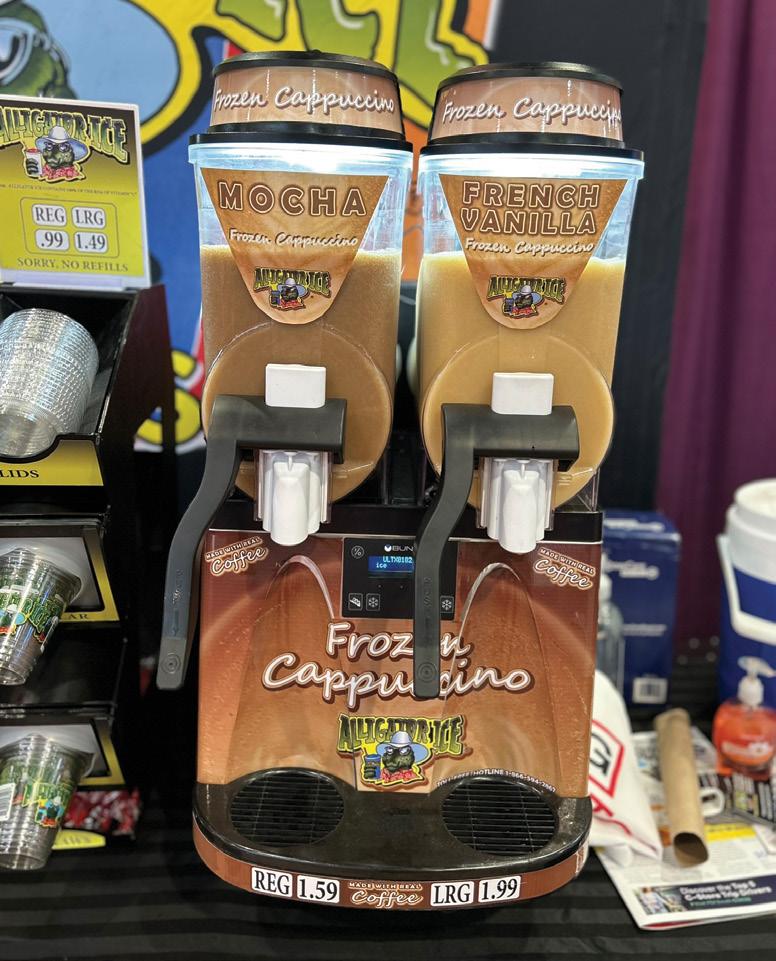
Coffee:
canned, frozen, equipment— you name it.

Dispensers for cold dispensed beverages are starting to look more like bar taps.

EV charging, like this one from Wayne.
Chicken, we literally cannot get enough of it in our channel.

Display cases to show off all your delicious foods.

WARNING:THIS PRODUCT IS INTENDED FOR ADULTS ONLY. DO NOT USE IF PREGNANT OR NURSING.

FOR TRADE PURPOSES ONLY, NOT FOR DISTRIBUTION TO CONSUMERS. DISTRIBUTED BY ACAI DISTRO

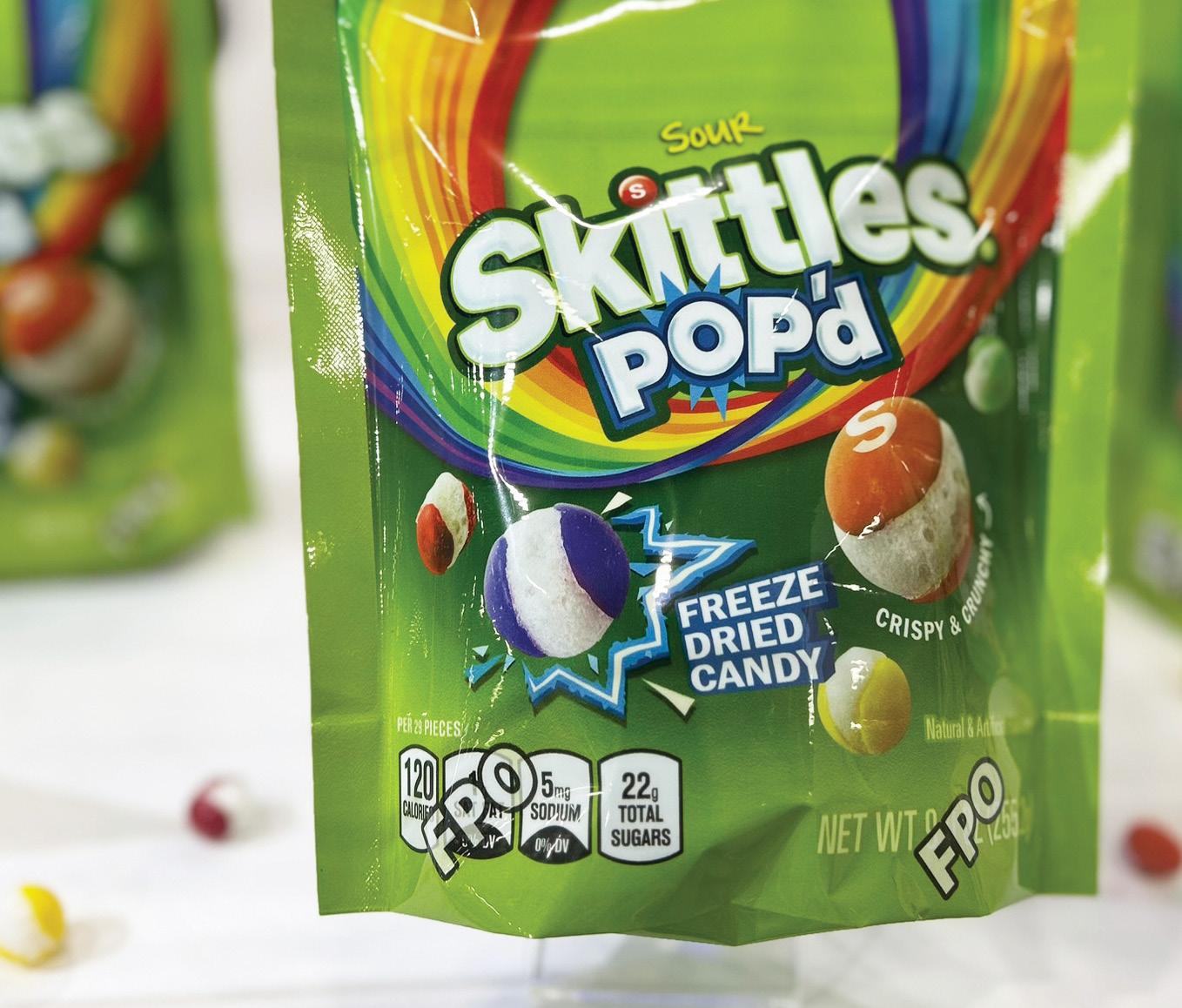
Freeze-dried candy, or what I called “astronaut food” when I was a kid.

Games of skill, like this one from PaceO-Matic.

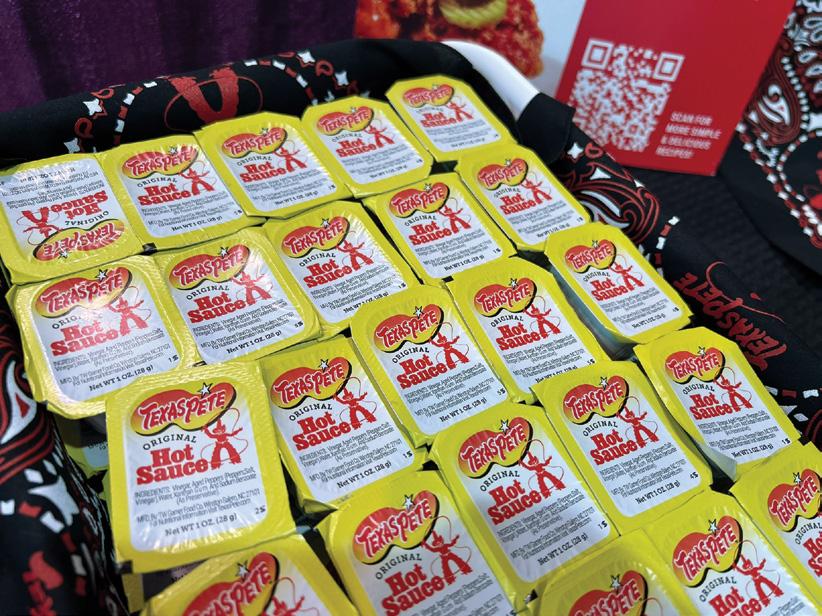

Ideas were literally everywhere, including the debut of Ideas 2 Go during the Day 2 General Session.
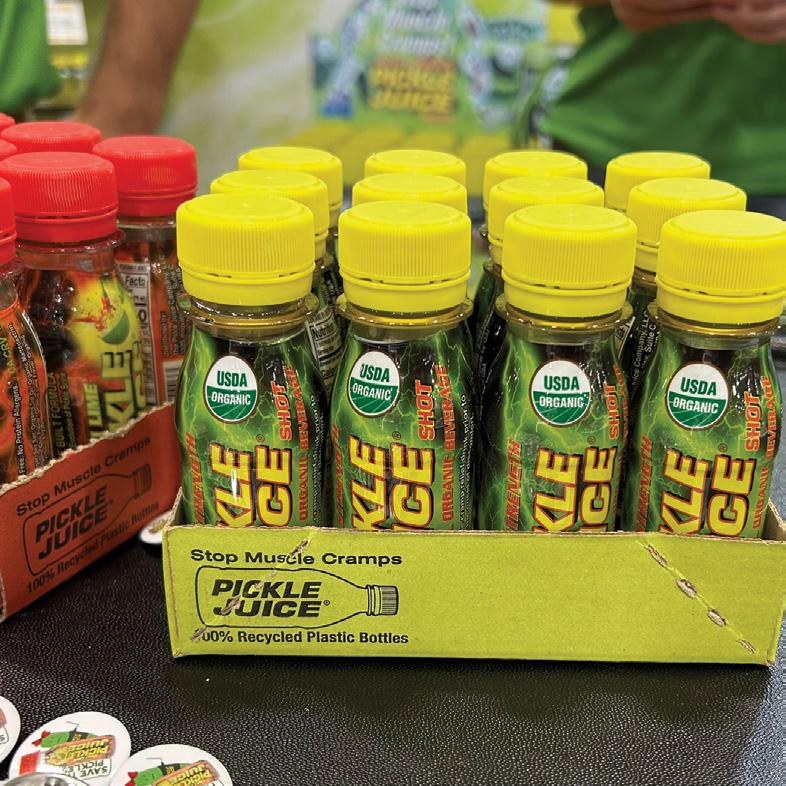
















Lemonhead— looks like the confection born in 1962 is stepping into the future.


Mash-ups— like the songs but with two brand names coming together for one delicious product.
Nicotine pouches for those looking for an alternative.



Ovens, like this beauty from Ovention.
Pickle everything— this trend quickly stood out in the merchandise section of the floor.

Protein also deserves a mention.

Thank you for starting with a Q, you earned your place on this list.

Refrigeration, because convenience stores own the packaged beverage category.

Sour is still going strong in the confection space.









































































Mike Tyson. Enough said.
Unreal, as in there were more than 26,000 attendees at this year’s NACS Show—a record!
Vapor recovery, like this one from Healy.

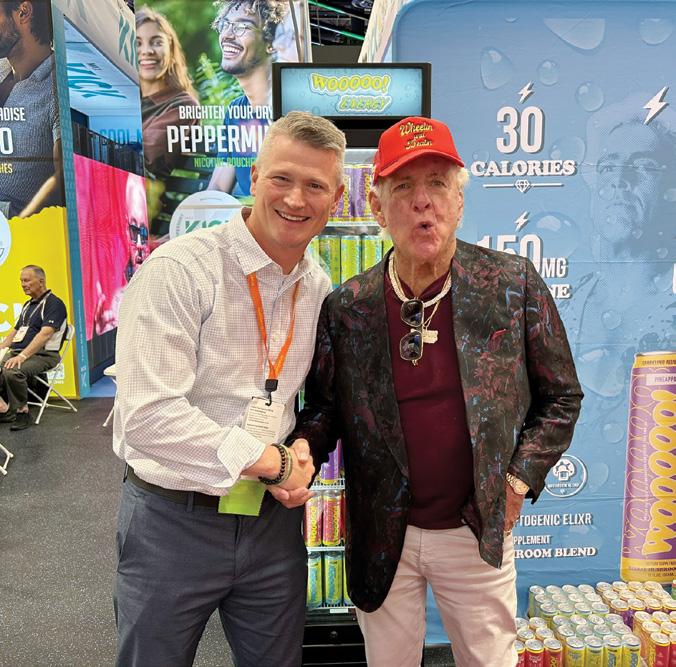

Come on X, that’s two years in a row without an entry. Someone please step up for 2025 in Chicago!
Yetis … and now there are two.
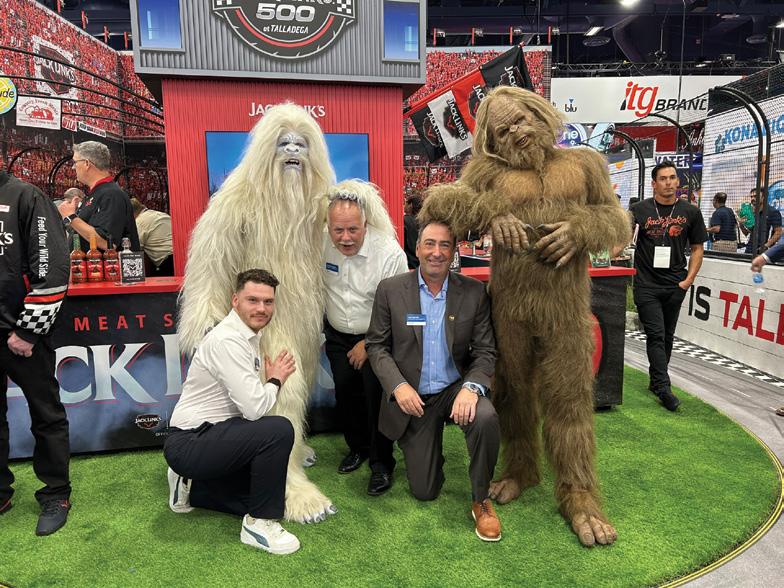
Zevia craft sodas: Speaking of, I like the evolution of soft drinks. From fast-growing craft and probiotic offers to new flavors from Pepsi, Coca-Cola and Keurig Dr Pepper.



















Hardening stores requires a soft approach to community and competitors.
BY JOE BEETON





Great customer service is also good security.”
ighty-three percent of people said they wouldn’t consider a job in the convenience industry, according to the most recent report from the NACS/Coca-Cola Retailing Research Council (NCCRRC). One major reason? A perceived lack of safety, with nearly half of the survey’s 45,000 respondents fearing crime on the job. That perception is just one reason that store safety and security is crucial to retailers’ operations.
“The most important weapon we have in attracting and retaining talent is store safety,” said Lori Buss Stillman, vice president of research and education at NACS. “There is no higher priority than ensuring our greatest asset—our people—have the training, resources and support critical to their own safety and that of the customers they serve.”
Retailers agreed that there are measures that can be taken at every c-store that would reduce customers’ and employees’ exposure to risk and make them feel safer.
“You can’t just take a blanket approach to improving security in the industry,” said Karen Warwick, BP’s global mobility and convenience security senior manager. “You have to understand what’s happening at the station level, as every station faces unique challenges.”
For a global company like BP, markets in Mexico and South Africa can be particularly challenging and require extra security measures, including the possibility of armed guards.
But the more a c-store is communityminded, the better—and safer—it is, Warwick said, explaining that the ideal store experience is that a staff member greets customers by name and asks them about their family. Great customer service is one of BP’s most paramount goals as a business, she said. “But great customer service is also good security.”
Deepening a store’s community ties and the rapport between employees and customers can build loyalty among both parties, reduce employee turnover and make stores safer. But one practical place to start that will benefit all retailers no matter what market they’re in is quality training for frontline workers.

In high-density cities like Houston, Los Angeles or Miami, for instance, the volume of foot traffic and the general rates of crime in the area are going to dictate an entirely higher level of security than a comparable store in say, rural Nebraska, Chris McGoey of McGoey Security Consulting explained.
The very first tenet of the NCCRRC action plan for becoming an employer of choice stresses the need to invest in safety training. In some cases, BP orchestrates different levels of personalized training depending on market-specific risks. “In an ideal world, we would go out and provide personal experience to every member of staff, but with tens of thousands of stores, it’s just not tenable. What we have found, though, is that when possible, staff responds better to training in their own stores with their own team members.”

Structural Concepts has put c-stores in a prime spot to capture more share of the foodservice market by providing solutions aligned with the needs and interests of both operators and shoppers, ensuring consistency in the fresh food product, and delivering an enhanced experience.
Refrigerated self-service wall cases, end caps, and islands easily create impulse-buy sites, provide daypart merchandising fexibility, and the ability to cross merchandise, while blending into high trafficked areas to generate incrementality by stimulating purchase decisions.
On average, per NACS Speed Metrics Survey, c-store customers spend only 0:03:33 from the time they leave their cars until the time they get back in their cars with their purchase. Structural Concepts enhances convenience and speed of service to those time-starved shoppers with a deep portfolio of self-service merchandisers and displays designed to accommodate the modern consumer’s fast-paced lifestyle and desire to make speedy selections and transactions.
Utilizing space-saving innovative display options, combination models optimize foor space with multiple display areas in a single piece of equipment providing the fexibility to sell a variety of fresh foods within different methods for serving the customer.
Taking full advantage of unused space and helping operators realize untapped profit potential, Structural Concepts also offers countertop displays as well as undercounter merchandisers whereas the shape of these cases makes them ideal for integrating into counters so that all customers see is fresh food and beverages making these modular units the perfect grab-and-go solution.
With prepared foods making up 68.4% of foodservice sales in c-stores where the top categories include sandwiches/wraps (42%) and meals/ready-to-eat (29%), Structural Concepts has elevated the customer experience with a vertical combination grab & go refrigerated and heated display providing both hot and cold temperatures in the same case to meet the needs of those shoppers who have a high interest in healthier and prepared foods.









Kelly Harrington, director of asset protection at RaceTrac Inc., and Wes Pate, senior director of loss prevention and risk management at Refuel Operating Company, shared their experiences and advice for enhancing store safety at an Education Session at the NACS Show last month.
The duo offered five pillars to store safety. While every store is different, the pillars can be a framework for thinking about safety and developing a plan.
Understand store risk: Multilocation retailers should give each of their stores a grade or a ranking: One through three, for example, or one through five, with the higher number indicating more risk. These rankings can be built using a combination of the retailer’s own experiences and external data sources (make sure you find an unbiased source). As part of this process, it’s critical that store leadership documents what’s happening in and around the locations. And don’t forget to think about risk holistically—do you have stores in locations where there might be weather events, for example?
Enhance physical security: The ranking system will lead you to which stores need the most investment. CPTED—crime prevention through environmental design—is one way to think about a location’s physical security. Something as simple as a row of bushes instead of grass can impact a store’s risk—even better if the bushes have thorns. Your local law enforcement agency may be happy to do a CPTED walkthrough. More concretely, continue to invest in your camera system, Harrington and Pate agreed.
Train your people: De-escalation techniques don’t have to be complex. BLAST—believe, listen, apologize, satisfy, thank—is a simple framework. Harrington shared that RaceTrac has a full training program that centers on empathy. “It’s about treating folks how we want to be treated,” he said. When it comes to when and whom to call for help, keep it simple. Don’t overwhelm store workers with a flowchart. Also, give them training about what to say on the phone to a dispatcher. That conversation can have a huge impact on the speed of the response.
Understand community resources and local government: Calling the police can’t be your only option, particularly in areas where the police struggle to keep up with the volume of calls. Are there other government agencies that can help? Who in the city has funding to help with the homeless population or drug abuse? Are there local charities or other organizations that can assist?
Your store isn’t an island. Are there other nearby businesses you can partner with?
Build relationships with law enforcement: This one might be hard, but it’s simple: Build relationships now. Finding ways to support and help law enforcement also happens to be the right thing to do for your community.
One aspect of BP’s training that spans every single store location is its nonconfrontation policy. “If staff do find themselves in a difficult position such as a robbery or a theft, they know that we expect them to put their welfare and safety first,” Warwick said.
The retailer extends the same policy to third-party guards employed in certain locations. “They are there to support the staff, but there are very clear boundaries around what they can and can’t do, and it’s important that they feel part of the team. We want them to go home safe as well.”
Even guards can only do so much.
That’s where store hardening comes in. A large part of hardening—assessing security risks and implementing measures to reduce them—involves physical interventions, which BP said is always going to be done at an individual store level. “You have to ask, ‘Where does this particular store need assistance? It might need a fence here or lighting there.’”
It’s a trade-off, though, Warwick continued. “We want to create as many layers of protection as possible around the team members and guests, but we never want to put so much security in place that it detracts from the customer experience or becomes an unpleasant place for staff to work.”
Fortunately, a lot of hardening measures are simple. Lighting is always a great place to start, especially around vulnerable frontages, explained Rob Reiter, the owner and principal consultant of Reiter & Reiter Consulting and co-founder of the Storefront Safety Council. Reiter has over 25 years of experience in store and perimeter security, with an emphasis on the prevention of accidental or deliberate vehicle incursions and storefront crashes. Retailers should do an assessment and see where they can harden access points with improved locks and tamper-resistant hardware, he said.
Locking cooler doors when alcohol sales end for the night or locking up alluring high-theft products such as lottery materials and tobacco products are good measures to implement, but remember when it comes to crime, cash is king.
Safes have come a long way over the years, said McGoey. Depository safes, which allow cash to be dropped in directly, have become crucial in deterring robberies, he said. It’s even better when the safes have a time-delay function.


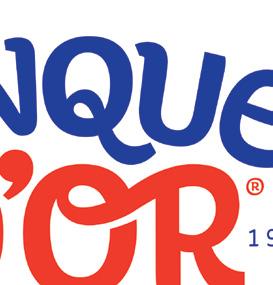




Banquet d’Or®’s range of pastries and desserts combines authentic French flavor with freezer-to-oven convenience. From sweet treats to savory grab-and-go snacks, our lineup has the options you need to keep customers fueled and coming back. They’re easy to bake. Incredibly easy to love. And deliver consistent, cost-eff icient and delicious results every time.
✓ No proofing. No defrosting. Pre-glazed.
✓ on transport costs and storage space.*
✓ Versatile Range and Planet Friendly.
✓ Clean Label Non-GMO and preservative-free.
✓ Less than 30 minutes from freezer to oven.
*Compared to pre-proofed pastry.

Video is still one of the strongest deterrents.”
But even with the best practices for safeguarding cash, tobacco, lottery tickets and other high-value products near the register, the counter is always going to be a target for thieves. As such, the counter’s location within the store’s floorplan matters, McGoey said. “The exact placement of all elements of a store, from backroom to bathrooms, and especially the counter, can make a huge difference.”
The closer the counter is to the entrance, the quicker bandits can get in and out of the store.
Register placement matters for an even more serious reason, which is that a vehicle crashes into a convenience store more than 20 times a day, according to Reiter, who has developed a professional expertise in the subject. “If your store isn’t protected, you run the risk of either an accidental or a deliberate crash,” Reiter said.
From analyzing historical records of approximately 30,000 vehicular collisions into c-stores, Reiter found that nearly 10% of those incidents were purposeful.
Behind the wheel of stolen vehicles, crashand-grab thieves slam into the front of a c-store at, say, 30 miles per hour. They’re trying to enter and exit again as fast as possible with cash and stolen merchandise, or even sometimes simply one beer from the cooler, Reiter said. “I’ve literally seen someone crash into a store with a vehicle, walk over and grab a banana off the counter and leave.”
More commonly, crash-and-grab jobs target ATM machines. “They’re usually bolted down, so you have to hit them with something to knock them over,” Reiter said. As such, it’s important to try to place high-value targets away from doors and windows fronting the parking lot. “Always try to move ATMs to a back wall of the store, distant from doors and away from windows,” he said.
C-stores are meant to be inviting community cornerstones, Reiter continued, and as such most feature glass doors that fill the store with light and make them more attractive from the outside. Glass also allows police to see in and staff to see what’s happen-

ing outside. “It’s very hard to have a store be laid out in a way that is customer-friendly and inviting to people to park right in front of, but that wouldn’t allow a vehicle to get up to 30 miles per hour right through the front doors.”
The answer is to install bollards, he said. “Bollards are fast, easy and cheap. They’re pedestrian-permeable and vehicle crash-tested. And it’s a one-time cost that will last you 25 years, so when you amortize them, they literally cost pennies per day.”
Reiter said that a number of large retailers don’t build new stores without bollards and many are actively retrofitting existing stores with them.
Hardening measures can come at a cost that isn’t always financial. Warwick noted that at the end of the day, you don’t want your customers or your staff to feel like they’re trying to enter—or defend—something akin to Fort Knox.
Tech is essential and can increase store safety in a less aggressive way, sources concurred, agreeing that some of the simplest tech is still best. “Video is still one of the strongest deterrents,” Reiter said.
Monitors that show the camera view to those in the store are particularly effective, McGoey added. Simple door chimes are also often surprisingly helpful.
Wherever you can, increase video surveillance of your parking lot and entrances, Reiter said, and always have a plan to update equipment when necessary, including your alarm system capabilities and your systems for alerting management and police.
BP works extensively with LiveView Technologies (LVT) mobile surveillance in

its parking lots and fuel pump areas. Using LVT can be challenging, though, because of the units’ size, which can also look intimidating to some customers. “You want to keep the pathway from your pumps to store open and welcoming, but also safe and secure,” Warwick said.
In the United Kingdom, BP is also experimenting with its staff wearing bodyworn surveillance cameras similar to those used by police and security officers.
When aggressive or belligerent guests see themselves reflected in the body cameras’ mirrors that show what’s being recorded, “They often realize how silly they look, and it calms the whole situation down,” Warwick said. “But if they continue behaving badly, then we’ve got a capture of evidence. And we had our first conviction a few weeks back in in the UK based on body-worn camera footage.”
It’s the staffs’ choice at BP whether to wear the cameras or not. “But they all seem to all really like the cameras,” Warwick said. “It makes them feel safer.”
The cameras are an example of technology that BP found effective in one market but needs to test in others. “In the UK, it’s very normal to see staff wear body cameras,” Warwick said. “It’s probably not so normal in other markets like the United States, so we’re being mindful of the legislation in different

states and working with other retailers and the police to normalize the approach.”
It’s important to BP not to “overengineer” security interventions so much that they detract from guests’ positive experiences in and around a store location, she said. “You don’t want to alienate customers with a Big Brother approach.”
“We’re hyper-cautious about introducing, testing and piloting technologies,” Warwick said. “We don’t put anything into stores that might cause an unforeseen issue. And we work closely with our staff teams on the ground. We don’t implement anything without their blessing.”
And while it might be easy for a massive retailer like BP to test and implement technology on a wide scale, that’s not the case for small and independent stores. As such, the NCCRRC action plan calls for a unified effort. “Smaller operators would benefit from help in curating which technology solutions to deploy and from collectively negotiated rates,” wrote the report.
The spirit of collective effort echoes throughout c-store security strategies. “While normally you’d expect retailers not to speak to competitors,” Warwick said, “you may be surprised to learn how extensive our collaboration is in the UK when it comes to security. It’s one area where we want everybody to win.”
Part of that has to do with helping one another identify common threats. “What risk assessments have taught us is that it’s a really small minority that are causing the majority of the problems, and we’ve found that if they’re causing a nuisance in our stores, they’re doing the same at the store a few meters down the street.”
Reiter concurred. “Theft and robbery at c-stores is often not considered organized crime, but there are patterns that we see, so there’s some level of organization to it.”
BP tries to “systematically identify and put laser focus on the [people] causing the issues,” Warwick said. “One way we’re doing this in the UK is with Auror, our incident reporting tool. Auror entails retailers joining efforts to share information around prolific offenders so that law enforcement can join the dots for much more compelling cases.”
Working with local law enforcement is another big pillar of the NCCRRC action plan for retailers. Law enforcement won’t be able to prevent every crime, but it helps if retailers can provide police with evidence in the event of an incident.
The more that local officers come by and park their car out front, the better it is for stores and their employees, McGoey said. “Everybody just feels more comfortable if officers get to know the staff, who would ideally be able to call officers directly on their cell phone to request a drive-by even when they’re just feeling a little nervous.”
That extends to an overall philosophy of making your stores a welcoming place in the community, especially in the darkest hours of the night. “A lot of places won’t let people use the restroom ... but late-night workers— delivery drivers, police officers, taxi and Uber drivers—often have a hard time finding a restroom at night,” McGoey said. “The more friendly you are towards that, the more
you’re going to get friendly traffic coming and going, which makes the place safer and makes the employees feel safer.”
It all comes back to community and to people. “Community puts a ring of steel around the store,” Warwick said. If a store is convenient, and customer service is friendly and welcoming, it should feel like an extension of a person’s community. “As such, they want to protect it,” she added. “We can look at lots of different technology and the like, but as I said, it begins and ends with people, and if you have your staff and your community engaged and supportive, then security suddenly becomes a lot less challenging.”

Joe Beeton is a contributing writer for NACS. His writing and editing career has focused on real estate and development with an emphasis on retail.






BY BEN NUSSBAUM


KBill Kent purchased the Kent Companies from his family in 1984. Under his leadership, it’s grown from having less than 15 convenience store locations to more than 100.
ent Kwik stores are a common sight across West Texas. In addition to its flagship convenience store banner, the Kent Companies includes standalone restaurants, tire stores, a check cashing business, a fuel transportation fleet, a sign company, wholesale fuel accounts and even urgent care facilities.
Bill Kent has owned the Kent Companies since 1984 and was on the NACS board of directors from 2015 to 2021. Under Kent’s leadership, the Kent Companies has grown to include more than 100 convenience store locations and operations in eight states.
LET’S JUMP RIGHT IN. WHAT ABOUT KENT KWIK ARE YOU MOST PROUD OF?
That’s pretty simple for me. I’m proudest of our people. This is our 67th year, and we’ve had a lot of people over the years, as my father did before me, who have been such an integral part of our success. I’m blessed to have good people and I realize that without good people, all we’re really doing is operating a bunch of brick buildings with merchandise. It’s all about the people, and that is, without a doubt, the thing I’m proudest of.
WHAT’S UNIQUE ABOUT THE WEST TEXAS MARKET? HOW HAVE THOSE WEST TEXAS ROOTS SHAPED THE DNA OF YOUR COMPANY?
I think every place is unique, but certainly West Texas is. In West Texas, the only resource we really have is oil and gas, and it’s a very entrepreneurial area. It’s a place where people are fairly forgiving, supportive and willing to see people succeed. I’ve had luck attracting some people to Midland, just because it does have a good reputation for an entrepreneurial spirit. And a lot of people have found success here financially.
Now, the other side of it is, in the Permian Basin area where our headquarters is, we’re subject to all the booms and busts of the oilfield and the oil price cycle. When it’s good, when it’s booming, it’s really good. When it’s a bust, it’s ugly. And those are difficult times.
It’s taught us a lot over the years. It’s difficult to do a lot of forward planning when you’re not in an economy that has either steady growth or stays flat. We just seem to either be on a massively upward swing or a massively downward swing, and that makes planning very difficult.
Another one of the downsides is we have some very distorted, unique pay scales and






pay rates in West Texas, in my opinion, because of the oilfields. It’s one of the few places that I know of where a kid right out of high school can make six figures. It may be really difficult, hard work— potentially even dangerous work—but there aren’t a lot of places like that. The downside, from our perspective, is that it makes it difficult to find entry level people. It also distorts all types of pay rates, including even office positions.
… but it really hasn’t. We’ve planned and executed some of them well, but a lot of them we’ve kind of just fallen into. We put some check cashing Mr. Payrolls in our stores, and then ended up acquiring that franchisee when it was struggling. And then with that business, we started acquiring all our ATMs, and now we have ATMs all over the place.
West Texas has great, resilient people. Tough people.
And then when the bust comes and they start laying oilfield workers off, people believe that their value to a company is what they were making during the boom. So that’s one of the downsides to it.
West Texas has great, resilient people. Tough people. They’re just the salt of the earth. I love them, and they’re great customers. You know, there are great people all over the world and certainly all over the country. But I think West Texans are unique, and we’re really blessed to be out here.
My oldest brother, Jim, along with my dad, decided we couldn’t keep operating old service stations just selling gasoline. They started the process [of expanding the business in other ways] years ago. My middle brother, Tom, got us into the quick lube business. For the longest time, those were the two businesses, convenience stores and quick lubes, that were growing simultaneously. I’m the youngest, and I bought the business from my family in 1984.
I’d love to tell you that each one of the businesses we’re in has been really strategic
After that, I was building a truck stop in my hometown of Monahans, Texas, and the mayor is a guy that I grew up with and played football with, and he called me and said, “Bill, we need a restaurant in this town.” I ended up looking and found the Huddle House system, and that’s how we ended up in the restaurant business. From there, we’ve expanded and started our own restaurant operation called Rustic Cafe.
The foodservice business in the convenience store industry is such a significant piece today, and so we’ve pursued that. We have our own commissary, and we have our own Kwik Eats operation inside the store. We make hamburgers, chicken strips, breakfast burritos, pizza and other comfort food, all of that just kind of evolved.
We backed into a sign company, just because we couldn’t get service on our signs and I got frustrated. And then I got frustrated with common carriers not being able to keep drivers and our stores wet, so we got into the transportation business. My father was in the tire business, and we’re still in that. We just keep finding things we either have to get into or we feel like we’re forced into.
The one we really gave a lot of thought to get into strategically was the urgent care business. I had a doctor friend of mine that had a few and he was having some health














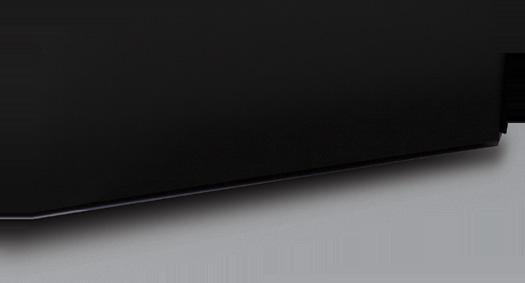

































We really focus on our team members that interact with the guests.”
issues. I had been thinking about this business for quite a while, and I thought that was an industry that was unique and had some interest to me.
Well, we’re slowly getting better at that with each acquisition we make. Adam Sturdivant, Vice President of Strategic Planning, leads our acquisition process. For us, it’s getting an opportunity to send our advanced team into the business when it’s appropriate timing for us to evaluate what needs to happen at the store level, from signage and POS equipment to software integration and security systems. And then we have a separate group that looks at what needs to be done to try to turn the store into a Kent Kwik, not counting the fact that our HR team, led by Meredith Bright, spend a lot of time going back and forth to onboard those folks.
Our COO/President, Todd Watkins, has a really excellent military background. One of the things he’s excellent at is debriefing our folks after each acquisition to find out what we could have done better, what could have been smoother, where we messed up and where we did well. We debrief each one, and we try to be objective and ask, what can we do to be better?

When I bought the business, we weren’t very big. We had quite a few service stations, but we only had a few quick lubes and less than 15 convenience stores at the time. I had to borrow all the money to buy my family out, and the only way I saw the business could survive was through great people. We just had to have better people and better guest service. And we had to do the basics better. We had to run clean stores, have clean restrooms, and have really good, friendly, well-trained team members. We built our whole organization around that. So if we have a competitive advantage, I’ll tell you, that’s what it is. We really focus on our team members that interact with the guests. We spend a lot of time training them. We really have a very extensive screening process, and we centrally hire all our people. … We do hear and get a lot of feedback from mystery shoppers, as well as our own anecdotal information and from guests sharing, that they can really tell a difference with our team members relative to our competition. It’s continued to be part of our culture, and we’re proud of that culture. We’re proud of our people.

Ben Nussbaum is the editorin-chief of NACS Magazine.








Better scheduling can increase efficiency, save on labor costs and lead to happier employees.
BY JAMIE GRILL-GOODMAN
Like many retailers, Alimentation Couche-Tard scheduled store employee shifts not too long ago using a pen-and-paper process, said Hélène Drolet, VP of operations excellence for the retailer. “[We then] moved on to scheduling software, and now this area is getting more sophisticated with predictive AI that helps retailers schedule according to store profile, sales and traffic forecast, all while taking account of the employees’ availability,” she said. “This is huge progress in a short period of time and a massive gain of effectiveness for retailers.”
For Couche-Tard, better tools for scheduling have reduced errors and improved accuracy, leading to improved employee satisfaction and a significant increase in engagement, shared Drolet. “With the technology we’re using, the employees have access to their schedule at distance without needing to call the store for their schedule. This in turn makes the store manager’s life easier and saves them administrative time so they can focus on their teams and customers.”
“The retail labor market continues to be challenging and competitive for employers, and employee needs are changing and evolving,” said Drolet. “We’re focused on listening to our employees and meeting them where they are with tools and resources that make it easier for them. When you do that, it leads to happier, satisfied and more engaged employees—and ultimately an improved experience for customers.”
We’re focused on listening to our employees.”

While some c-stores are implementing more employee-centric scheduling practices, the transition for others has been slower.
“Service sector industries, including retail, have historically approached scheduling for their frontline workforce from a labor-cost, company-centric approach,” said Negin Sattari , director, research , Catalyst. She says this has led to schedules that are both rigid and unpredictable.
Many retailers and c-stores still need to readjust their staffing at the last minute, often based on customer traffic in their stores, said Sattari. But advancements in AI may mitigate the problem of last-minute staffing. Drolet noted there are a growing number of AI-driven tools that allow retailers to schedule efficiently based on trends and forecasts.
Patrick O’Mara, senior solution principal, Relex Solutions, said that the tightening labor market, especially in the convenience industry, “has prompted a shift towards more employee-centric scheduling practices, recognizing the importance of employee engagement in maintaining operational efficiency and service quality. Retailers are now exploring innovative ways to time, focus and optimize work in stores to not only meet operational demands but also enhance employee satisfaction.”
“While the COVID-19 pandemic and the high rates of attrition among frontline employees in its aftermath attracted more attention to how ... work schedules are handled in industries like retail, there is still a long way to go,” said Sattari. “Companies adopting an employee-centric approach to their scheduling practices is one solution.”
Not enough workplace flexibility is the top reason frontline retail workers are considering leaving their jobs, according to a study by McKinsey. Retailers are finding solutions—and finding that flexibility can take many forms.
Dollar General launched a scheduling program called Store Manager Flex after receiving feedback from store managers, giving managers across the chain more control over schedules. The solution offers store managers a simplified platform with various scheduling


options aimed at increasing flexibility and efficiency, providing a more consistent workweek, as well as accommodating employees’ schedules based on their individual store and personal commitments.
Schnucks, a Midwestern supermarket chain, advertises to prospective employees that they can work when and where they want with Schnucks Flexforce. Flexforce is part-time flexible work, akin to what rideshare and food-delivery service employees experience. The platform allows workers to select shifts (of at least four hours) and store locations that best fit their personal schedules. Flexforce teammates can log into a Schnucks scheduling app to view and claim open shifts.
For Heinen’s, a supermarket chain with locations in Ohio and Illinois, implementing mobile employee self-service technology has been a boon. “It gives associates the flexibility to request time off at any time they want,”
Phil McElfresh, director of labor and process improvement at Heinen’s, said in a webinar about how the grocer positions itself as an employer of choice.
“They can be sitting at home tonight and realize they need October 2 off, and they can put it into the app. They don’t have to worry about remembering to do it when they come back to work in two or three days. They have the ability to swap shifts with peers at their own freewill, then bid on extra shifts when available.”
For store managers, these tools offer ease and reliability.”
This type of schedule flexibility and advanced planning is one way retailers can reduce turnover, said Safi Modi, head of growth, Modisoft. “In the fast-paced world of convenience stores, where turnover rates can be high, these changes can make a significant difference. By allowing employees to swap shifts and accommodating their busy schedules, retailers not only enhance the workplace atmosphere but also demonstrate support and care for their staff.”
Additionally, he said, “Modern scheduling tools further enhance both the frontline worker’s and the store manager’s experiences by offering features like shift swapping and self-scheduling, which empower employees to manage their own schedules and reduce conflicts.”
“Advanced scheduling tools play a crucial role in improving both the frontline worker’s and the store manager’s experience. Features such as shift-swapping, last-minute shift pickups and instant pay options enhance job satisfaction by offering flexibility and immediate rewards,” O’Mara said. “For store managers, these tools offer ease and reliability, providing an accurate forecast of staffing needs which, in turn, allows them to focus more on customer interaction and leading their teams—activities where they add the most value given their deep understanding of the store and its customers.”

March 24-26, 2025
Nashville, TN

The NACS HR Forum is a must-attend event for the people in our industry who recognize people are the number-one asset of successful businesses.
Form lasting connections with your peers from around the country over three contentfilled days. This can’t-miss forum offers you fresh solutions to your most pressing issues —recruitment, retention, legislative issues and more through engaging and informative presentations. You will leave energized, inspired and ready for tomorrow.

Attendees earn professional development credits from HRCI and SHRM.
/ convenience.org/hrforum
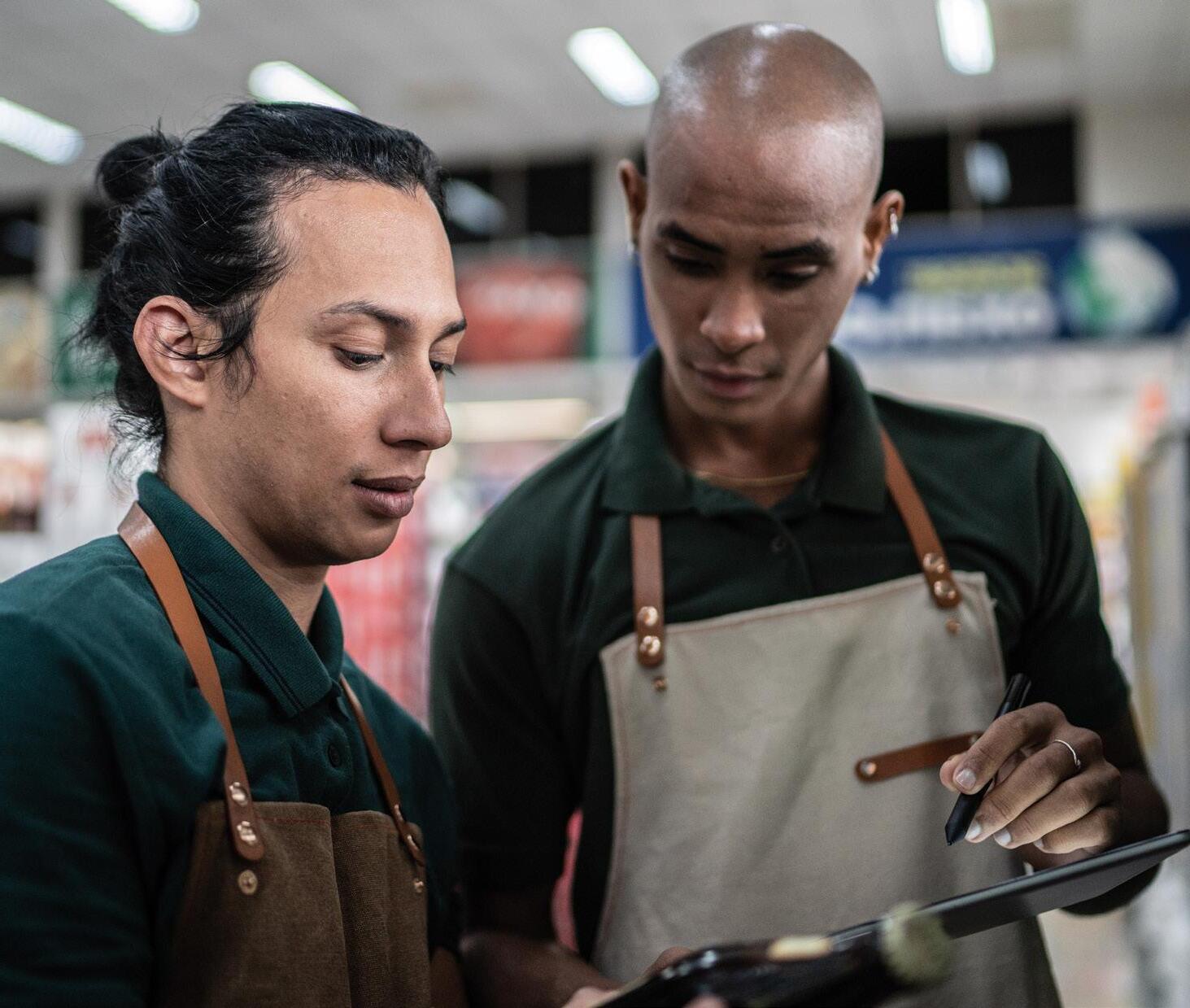
While shift swapping and last-minute shift pickup are still emerging features, Drolet noted there are opportunities to increase usage and adoption through training. “Those who use it like that it is fast, easy, and convenient. It also unburdens the store managers, who no longer have to manage all these changes.” Cross-training that enables workers to pick up different roles in the store is another tactic that promotes flexibility while making sure shifts get covered, said Sattari.
“Frontline employees receive training on tasks that are not part of the routine responsibilities of their main role, so they can use their time and skills in various ways across the retailer’s operations. This means shifts won’t have to get canceled,” she explained.
Another key to reducing frontline turnover is to review how your scheduling practices assist women and parents. Across industries, 44% of women say they will likely need to change jobs to balance childcare with work demands, as well as 37% of men, according to a 2023 survey conducted by The Harris Poll, commissioned by Catalyst.
“When Catalyst spoke to women in frontline roles to understand how they feel at work, they told us that unpredictable scheduling is one of the key barriers that keeps them from thriving,” said Sattari.
They can use their time and skills in various ways across the retailer’s operations.”
“Strict and unpredictable work schedules tend not to account for women’s lives outside of work, including their disproportionate responsibility for caregiving,” said Sattari.
“When it comes to scheduling practices, the biggest move a retailer can make is to remove sources of instability, unpredictability and rigidity from scheduling systems to account for women’s lives outside work,” she continued.
C-stores looking to implement best practices might want to start by looking at the digital tools they offer—or don’t yet offer.
To begin, adopt electronic scheduling and stop printing schedules, said Drolet. “Instead, have employees go online for their schedule (whether through the in-store device or their personal device). This will ensure scheduling accuracy and reduce confusion. Don’t expect employees to figure out how the tool works, but provide appropriate training on how to use the tools.”
Modi added that c-stores should also consider tapping digital tools to account for employee availability and preferences and to ensure compliance with labor laws regarding breaks and overtime.
“Leveraging data from past sales and traffic patterns helps predict busy times and optimize staffing levels,” said Modi. “Integrating scheduling software with payroll and time-tracking systems can streamline operations and reduce administrative burden.”
He suggested that prior to looking for a scheduling software, retailers should check if their back-office provider offers any built-in scheduling tools.

Jamie Grill-Goodman is a writer and editor with 20 years’ experience in multichannel content creation for both B2B and consumer publications. Learn more at www.jamiegrillgoodman.com or reach her at jgoodman@jamiegrillgoodman.com



Take a scan of the requirements and upgrades needed for GS1’s Sunrise 2027.
BY JOE BEETON
The official transition to QR codes and other two-dimensional barcodes, known as Sunrise 2027, is now less than three years away. These new barcodes can store much more information than just a product ID and price.
You might already be excited about the many possibilities 2D barcodes bring. Think, for example, of being able to offer more transparency to consumers with comprehensive ingredient and allergen information on every product or keep closer tabs on inventory with batch and lot numbers and access to real-time expiration dates. If you aren’t yet aware of Sunrise 2027, or need to know more about the benefits it promises consumers, retailers and suppliers alike, then make sure to read “Check It Out: Barcodes Enter
the Next Dimension” and “Scanning the Horizon: Take Steps Today to Prepare for the Barcode Evolution” from the past two issues of NACS Magazine. (If you missed them in print, you can read them at NACSMagazine.com.)
But even if you’re excited and ready to march into the next dimension of barcodes, you might not be sure what exactly you need to do to get there.
GS1, the not-for-profit organization that is leading the barcode transition and has long set and maintained the standards for barcode systems worldwide, said that most importantly, retailers need to ensure their POS systems are updated and capable of scanning 2D barcodes. For some, that may require new technologies, software or equipment.
“No matter what type of business you are— whether you’re the single owner of one store or a huge national chain—you have the same starting point, which is getting to a minimum viable product,” said Ned Mears, the senior director of global standards for GS1 US. “The goal of Sunrise 2027 is that, by the end of 2027, all retailers will be able to scan a 2D barcode at point of sale and do at least everything you can today with a 1D barcode.”
But the process of getting there will look different for each retailer. Mears walked through some of the steps required, the technology upgrades retailers might need to make and what retailers should be asking their solutions providers to ensure a successful transition.
At minimum, the first phase of the Sunrise 2027 transition will require that retailers can scan a 2D barcode at checkout—essentially that means that the scan of a QR code will capture at least the product identifier, also known as the Global Trade Item Number®, or GTIN® , and link it to the product’s associated price in the retailer’s system so that the item can be transacted with that scan.
If you think of the transition in “crawl, walk and run” phases, that would be the “crawl” stage, Mears said. To crawl, the first thing retailers need to do is ensure they’re not using a laser-based scanning system—the new
barcodes will require image-based scanners, which may mean a capital investment for retailers who don’t yet have them.
The first phase also requires a conversation with your solution providers, Mears continued. “Solution providers across the United States and around the world have been very proactively updating their software to scan 2D barcodes using GS1’s Digital Link standards. This allows the scanners to pull data from the updated barcodes using different modes that can serve up the data how a retailer wants it.”
“Many of the major scanner solution providers will have basic modes to choose from. One is that you can make that 2D barcode send only the GTIN from the scanner to your host system tech stack, just like it’s coming from a UPC barcode,” Mears said. “Any additional information contained in the QR code gets dropped and you’re successfully completing a price lookup, and there you go, no changes are needed to your larger tech stack.”
Many manufacturers and brand marketers are already including 2D barcodes on packaging that bring all sorts of additional information and product transparency to consumers—and if they’re not yet, GS1 is confident that they’ll soon be jumping at the chance to. Those using QR codes without GS1 Digital Link are looking at when it makes sense in their packaging update cycle to convert to the new data structure. Manufacturers will want to check in with others in the organization and with their solution provider to see what capabilities already exist and what it will take to bring 2D to life. As for the data, it’s up to the retailer to extract that information and make use of it at POS.

Scan the QR code to register for a free GS1/ Conexxus webinar on 2D barcodes.

The goal of Sunrise 2027 is that, by the end of 2027, all retailers will be able to scan a 2D barcode at point of sale.”
We’ve seen people be most successful when they reach out to internal experts and solution providers immediately to ask, ‘What are you currently capable of? What is this lift going to be?
While that’s a simplified version of the steps required during the transition, there’s much more that can be done from there.
“My best advice would be to start small,” Mears said. “Then, you’ll have more time to work out what it might look like for your company to expand your scope and deepen that implementation without having to wait to realize initial value.”
In order to walk, run or even soar, you’ll need to focus on what your business needs are. Then, you’ll need to find out whether your existing equipment can offer the right level of data collection with a plug-and-play option or with some tweaks either on their end or via your own customization.
There will likely be some degree of customization required no matter what, he said. “What we found is there is no simple, out-ofthe-box solution that hits every part of your tech stack. Just think of all the software and firmware updates and the different coding that might have been rolled into these systems throughout their history. For example, there’s bound to be a little bit of nuance to get what might be five or more different systems across your tech stack all connected.”
Say, for instance, you’re wanting to capture more data than just the product identifier, Mears continued. “Some folks in the c-store space might already be doing something like capturing an expiration date—or at least looking at it, if not using it. Some solution providers already have default scanner modes available that will collect and transmit that data in your host system so it can take whatever action they desire.”
Solution providers will have a mode that sends over all the information contained in a 2D barcode, Mears explained. In that case, more steps are required to determine what you want your host system to do with it.
“A lot of these scenarios where you’re getting into complex data and really deep, holistic use cases can be multiyear processes,” Mears said. “Setting up those milestone stages of what you want to accomplish in chunks is critical to taking advantage of elements of 2D barcodes’ capabilities and their data as early as possible.”
For instance, you could add in the capability to capture expiration dates and then program your system to trigger dynamic price markdowns on fresh products nearing expiration. Or you could integrate the scanning process into your loyalty system. “These are all things that require you to take more steps to capture and use this data for specific reasons,” Mears said. “And we’ve seen people be most successful when they reach out to internal experts and solution providers immediately to ask, quite simply, ‘What are you currently capable of? What is this lift going to be?’”
What makes the 2D journey so complex, Mears said, is that there are so many decisions to customize what crawl, walk and run mean for your particular business.
It’s important, he emphasized, to consider whether you even need to “run.” What might be “walking” for some would be considered a “run” for someone else, she said. There’s still going to be an “if it ain’t broke, don’t fix it” mentality in the c-store industry, he noted.
“When I talk to businesses, some say, ‘We know our business needs [to scan 2D barcodes] now, so we’re going to complete the MVP with GTIN-only processing as soon as possible. These more complex elements are things we’re going to figure out after we learn more and see how things evolve.’ And that’s completely okay,” Mears concluded.























































































This advertorial-style guide of services and packaging appears monthly and is an information-packed tour of ideas and approaches that can change how consumers view your store or choose your brand. It spotlights the newest thinking in convenience and fuel retailing and gives you an advance look at ways of staying in front of industry trends. Products are categorized the same way we organize the Cool New Products Preview Room at the NACS Show each year in October— New Design, New to the Industry, New Flavors, Health & Wellness, Green (EcoFriendly), New Services and New Technology Products are considered “new” this year if they’ve been introduced since October 2023. The products featured here also can be seen in the Cool New Products Discovery Center at www.convenience.org/coolnewproducts

Big Machine Distillery
Spiked Wine Cocktails
NEW TO THE INDUSTRY
C-stores have spoken and Big Machine Distillery listened! Introducing the all-new wine-based version of our popular Spiked Vodka Coolers. These high ABV (12.5%), single serve, ready-to-drink, wine-based cocktails are available in eight delicious “all-season” flavors: Espresso Martini • Orange Chocolate Swirl • Chocolate Mint Twist • Cinnamon Caramel Crunch • Luscious Lemon Drop • Mango Margarita • Passion Paradise • Pina Colada Bliss. Spiked Wine Cocktails will be a huge hit with their C-store-specific display racks that are perfect for both cold boxes and countertops. Spiked Wine Cocktails are delicious non-carbonated, wine-based RTD’s in resealable pouches. Enjoy them chilled as a cocktail, or frozen as a boozy slushy!

C. Cretors and Company
High Roller Hot Dog Grill
The revolutionary High Roller Hot Dog Grill’s patented tip-up roller rack offers unobstructed access to the entire stainless-steel cooking surface, making cleanup quick and easy. The roller grill rack features removable roller sleeves that are dishwasher and sink safe for thorough cleaning, providing a cleaner and more appetizing product presentation. Accommodating a wide variety of products, including hot dogs, corn dogs, taquitos, grilled wraps, sausages, and more, it provides fresh and diverse options for customers. Save time and boost sales! Contact Shelly Olesen at 847.616.6901 or visit www.cretors.com.

Krispy Krunchy Chicken®
Cajun Chicken Sandwich
Krispy Krunchy Chicken’s® new Cajun Chicken Sandwich is the addition to your foodservice offering that will take you to a whole new level! Crafted with a whole muscle, all white meat chicken breast fillet that has been pre-marinated in our proprietary blend of mild Cajun spices, it’s coated in our famous breading, topped with our signature honey sauce and two pickles, and served on a warm brioche bun. Designed for those on the go, this sandwich is the perfect complement to our bone-in chicken and amazing tenders, delivering the crispy, juicy, and flavorful experience you expect from Krispy Krunchy® at an exceptional value. Visit krispykrunchy.com/krispy-krunchy-program to learn more about adding KKC to your store!

Java Monster Monster Energy Company
Java Monster is coffee done the Monster way: no foam, extra hot, half-caf, no-whip, soy latte. Enough of the coffeehouse bs already. It’s time to get out of the line and step up to what’s next. Wide open, with a take no prisoners attitude and the experience and know-how to back it up.

Brought to you by NACS, and designed especially for c-stores, THRIVR is like having a dedicated data scientist and trained marketer at every location. Schedule a demo to learn how you can simplify your search, social and reputation management in just a few clicks. And get an instant, customized digital health check comparing your brand’s local marketing presence and online performance to top competitors at www.convenience.org/thrivr.
703.518.4254 | thrivr@convenience.org
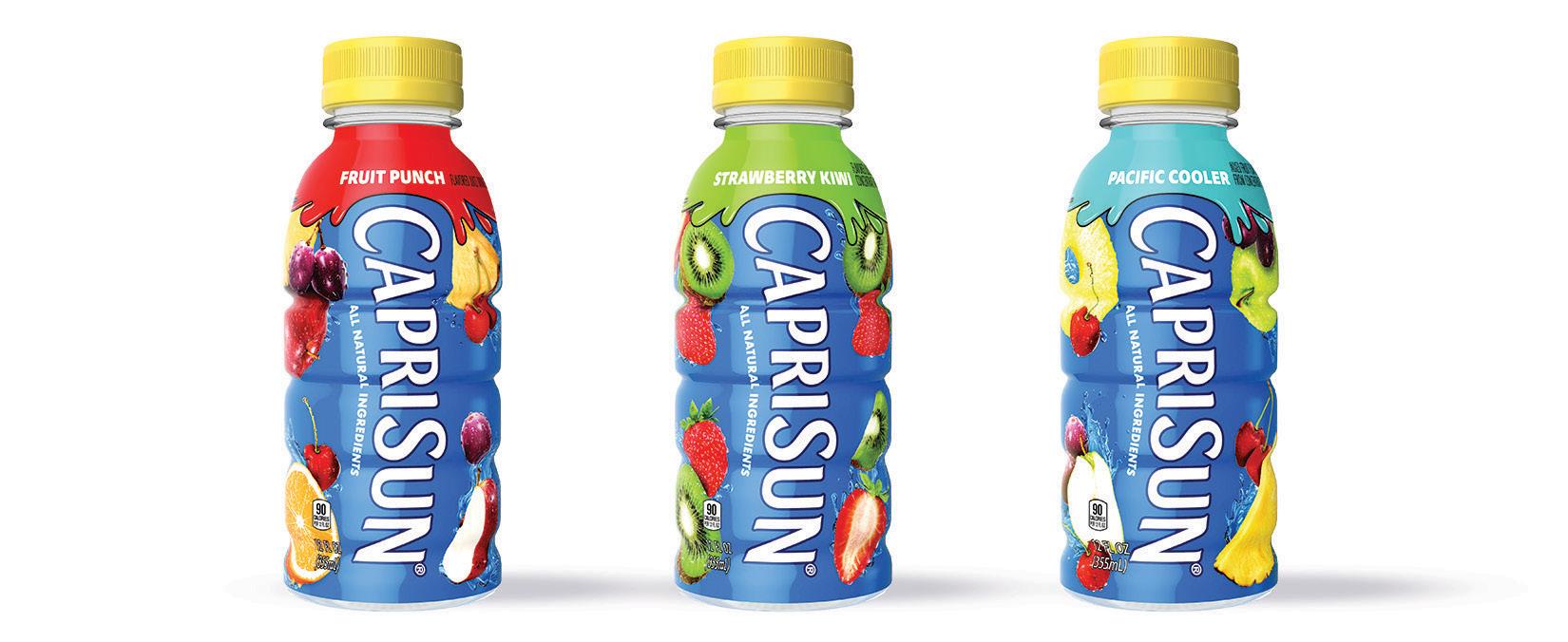
Kraft Heinz Away Form Home
Capri Sun Juice Drink Bottle
NEW TO THE
The perfect refreshing sidekick for all of your Epic adventures. A wave of fun flavors made with refreshing all natural fruit juices with no artificial colors, flavors or preservatives. The #1 kids’ favorite juice drink is now in a 12oz bottle. That’s the size of two pouches to quench Epic thirsts! Coming soon to beverage coolers everywhere in Pacific Cooler, Fruit Punch, and Strawberry Kiwi.
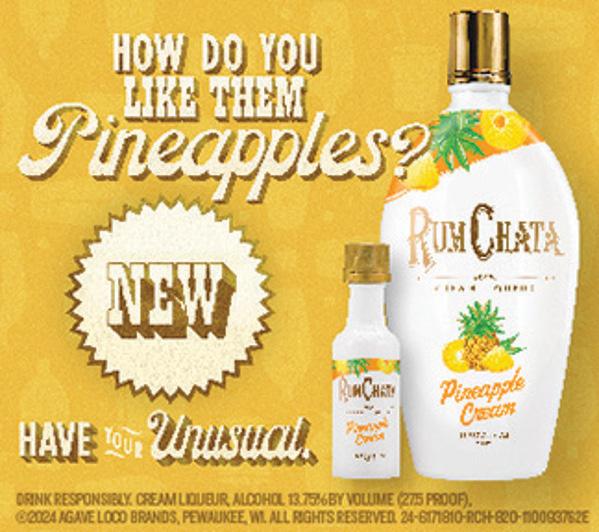
GALLO
RumChata Pineapple Cream
NEW FLAVORS

Stateside Brands
Introducing RumChata’s new Pineapple Cream, starring smooth Caribbean rum, Midwestern dairy cream, and a burst of fresh pineapple flavor. Pour in tropical shots. Make simple tiki drinks. Or, sip it on the rocks. Available in both 50ml and 750ml bottles.
NEW TO THE INDUSTRY
Surfside Starter Variety 8-Pack
Surfside Iced Tea + Vodka is made with vodka, real brewed tea, tastes absolutely delicious and has only 100 calories and 0 bubbles. Surfside is the #1 Selling Iced Tea + Vodka Variety 8-Pack SKU for 2024.
Please contact National Accounts Director Bobby to learn more about Surfside: Bobby.B@federaldistilling.com | 571.449.1276 | *Source: NIQ All Outlets L4 weeks ending June 29, 2024



American Style Sunglasses
Mississippi Bluesman® Sunglasses
NEW TO THE INDUSTRY
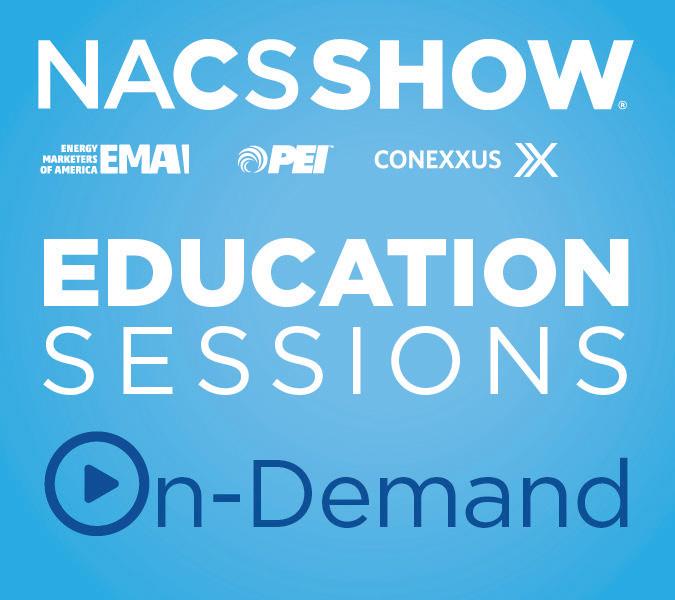
NACS
2024 NACS Show Education Session Recordings
Whether you’re 98 Miles from Chicago anticipating some Risky Business or just riding down your local street, Mississippi Bluesman® Sunglasses exude cool for all ! Display them on your counter or on an existing display, this universally popular style will be a repeat seller with its great quality and low price of $9.99. See it and other great sunglasses at: www.amstyle.us
Don’t miss out on exclusive access to over 40 industry-leading education sessions from the 2024 NACS Show! With on-demand recordings, you can immerse yourself in cutting-edge insights and innovative strategies from expert speakers at your convenience. Stay ahead of the curve by reviewing sessions you attended or catch up on those you missed. Elevate your knowledge and skills with dynamic content that will empower you to drive success in the convenience industry. Invest in your professional growth today and purchase education session recordings at nacsshow.com/recordings.

Manufacturing NEW TO THE INDUSTRY
Utilizing pharmaceutical-grade synthetic nicotine, NIC-S offers an incomparable, 100% tobacco-free experience. NIC-S revolutionizes nicotine enjoyment by only using pharmaceuticalgrade, non-tobacco synthetic nicotine, meticulously crafted to isolate S-type molecules. NIC-S delivers a consistent and unparallel premium quality in flavor and nicotine experience with every pouch. Every flavor is thoughtfully blended to satisfy the most demanding connoisseurs. Prior to packaging, each NIC-S Nicotine Pouch is delicately moistened with water, ensuring the ideal level of moisture for maximum enjoyment. Savor the flavor and enjoy your nicotine moment. NIC-S is smoke-free, sugar-free, discreet, comfortable and does not impact your surroundings. Available in six flavors: mint, wintergreen, cinnamon, berry, orange and flavor free in 3mg, 6mg and 9mg strengths.
CLOSE-UP COLD AND FROZEN DISPENSED BEVERAGES
BY PAT PAPE
Products from almost every convenience store category were introduced last month at the annual NACS Show in Las Vegas.
Among the innovations were new frozen drinks from Sunny Sky Products.
“We launched two new Sour Patch Kids [drink] flavors—lemonade and red berry—in both frozen uncarbonated and frozen carbonated,” said Isabel Atherton, vice president of marketing for Sunny Sky Products, which anticipates good things from the new options.
“Our customers have had great success with our branded LTOs,” she said.
“In fact, a top c-store chain launched the Sour Patch Kids watermelon frozen carbonated, and it overperformed any of their prior LTO flavors.”
Last year, sales of frozen dispensed beverages increased to $4,134 from $3,501 in 2022—the largest increase in sales of all foodservice categories, according to the NACS State of the Industry Report® of 2023 Data. While the category made up only 5.8% of foodservice sales in 2023, it generated the kind of margins that retailers want to see.

$2,700
Average gross profit $ per store from frozen dispensed
Source: NACS State of the Industry Report® of 2023 Data

Fun fact: While you might expect Slurpees to be most popular in warmer climates, it’s not necessarily the case. In fact, Winnipeg, Canada, is the Slurpee capital of the world according to 7-Eleven.
“Frozen dispensed is typically the smallest contributor to foodservice sales, but it boasts the highest margin,” said Emma Tainter, research analyst/ writer at NACS. “From 2022 to 2023, category margins increased from 63.35% to 65.31%.”
7-Eleven made beverage history with the Slurpee drink, trademarked the word “brain freeze” and continues to entice customers with unique new flavors.
“This year’s peach candy lemonade Slurpee is a continuation of that tradition,” said Megan Edwards, senior category manager of cold dispensed for 7-Eleven. “It was inspired by our fan favorite 7-Select gummi peach rings—a soft, chewy candy of tangy, peach delight—blending the sweetness of peach with the tartness of lemonade to make the perfect frozen treat.”
In August, 7-Eleven released the first ever pumpkin spice Slurpee, a flavor from Sunny Sky. Available at five select 7-Eleven stores, the LTO “was a fun experiment that corresponded with the launch of the full pumpkin spice coffee lineup,” she said.
Frazil, a Utah-based company with three slushy brands, also offered a pumpkin spice Frazil LTO in September and used the NACS Show to introduce its new espresso option, which will be a permanent flavor for its Café Tango line. Café Tango targets consumers craving cold or frozen coffee, and Frazil recommends putting the cold drink dispenser on the coffee bar. “In blind
taste tests, our frozen coffee beats out Starbucks and other category leaders,” said Brittany Bennion, associate brand manager at Frazil.
The company also produces the Frazil Energy drink in four fruity flavors, with the addition of cherry limeade slated for 2025. All three beverage lines use the same type of equipment, which Frazil owns, provides and services. Currently, the company has 35,000 machines across more than 20,000 locations.
“Frazil products are made with 100% real sugar,” Bennion said. “We don’t use high fructose corn syrup, and consumers like that a lot. We also use a dry powder product, not traditional syrups, so our product has a five-year shelf life, which is significantly greater than similar products. And because the beverage is uncarbonated, it tastes like a drinkable snow cone.”
Jones Soda Co. offers an array of both sweet and sour flavors for convenience operators to choose from.
“Jones Soda bestsellers are berry lemonade, green apple, blue bubblegum and strawberry lime,” said Jim Whitaker, vice president of strategic accounts at Jones. “Currently, we’re testing dill pickle slush with Circle K Canada and preparing new tropical Jones blends for testing in 2025.”
Maverik, Jacksons Food Stores and Thorntons joined other Icee retailers to introduce a new Froot Loops frozen beverage, a collaboration between Icee and WK Kellogg Co. The Icee Co. describes it as a “must-try flavor for kids and adults alike,” and social media

The most popular colors are red and blue.”
CSX, the engine behind category metrics and NACS State of the Industry data, provides current and customizable tools for financial and operational reporting and analysis in the convenience industry. Retailers can measure their company by any of the myriad metrics generated via our live database.
Contact Chris Rapanick at (703) 518–4253 or crapanick@convenience. org for a complimentary executive walkthrough.
influencers claim it truly replicates the taste of the popular cereal.
“Icee and Froot Loops are beloved brands that instantly transport you to childhood and make everyday moments special,” said Kimmra Hingher, vice president of marketing for The Icee Co.
In addition to tasty flavors, slush sippers crave beverages in bright colors that they can stack, swirl, mix and photograph for Instagram.
“Color is extremely important because customers shop with their eyes,” said 7-Eleven’s Edwards. “Every sales period we look for the best-tasting products; but behind that, we want to create as much color variety as possible across the barrels.”
Bennion said the most popular colors are red and blue—Frazil’s top flavor is Red Tiger’s Blood, which tastes like strawberry coconut, followed by sweet and fruity Blue Razzmatazz
When surveyed, consumers often indicate that they want better-for-you beverages, but frozen drink providers haven’t noticed a change in shopping behavior.
“Better-for-you options are always welcome in beverage sets, but less-so with frozen,” said Whitaker. “The finished products are not as light in texture when sugar substitutes are used, and they can clump in the cups during melting. Frozen is a more a unique consumer occasion, where mixology comes into play with consumers customizing them ‘my-way.’”
“I think those full-sugar options are what people reach for [in the frozen category],” said Atherton. “People see a frozen drink as a treat. It’s a little indulgence for them.”
Datassential surveys found that consumers crave frozen drinks, and 81% of consumers love milkshakes.
Since it made its debut in 2003, f’real, the blend-it-yourself shake, has grown into a global company with products available at more than 22,000 locations. Customers pick a flavor from the f’real freezer, place it in the branded blender, hit the button and walk away one minute later with a cold shake or smoothie. In addition to the self-serve blender, “f’real has a B7 blender that c-store operators can use behind the counter to create fun, seasonal, Instagrammable creations,” said Elizabeth Sommer, customer marketing manager at Rich Products, manufacturer of f’real.
The brand offers seven core flavors made with real milk and recently launched two new flavors that it unveiled at the NACS Show: Blue Raspberry Energy Freeze and Strawberry Watermelon Energy Freeze. Each energy drink has 100 mg of caffeine, which is about the same amount as a cup of brewed coffee.
“In the summer, f’real introduced a Mystery Flavor Milkshake, which had a fruity and familiar flavor that celebrated the heyday of summers past and present,” said Sommer. “And this fall, we introduced the Choco-Choco Chip Oat shake, a treat made with oat milk that will appeal to consumers seeking dairy-free options.”
“Cold dispensed beverages, the third largest foodservice category, made up 7.5% of foodservice sales in 2023,” said Tainter. The category beat NACS’ inflation metric and grew sales by 9.6%, a year-over-year sales dollar increase from $4,836 to $5,301. Gross profits increased from $2,667 to $2,744, and while gross margins decreased year over year, the category still managed a high margin of 51.76%.
While every c-store fountain should carry time-tested basics, occasionally tweaking flavors keeps the beverage bar fresh.
DON'T MISS THE CHANCE TO MAKE


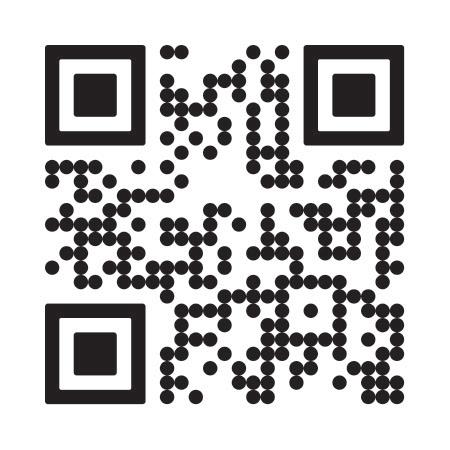
Represent your state March 11-12, 2025 in our
This fall, we introduce the Choco-Choco Chip Oat shake, a treat made with oat milk.”

“We’re always looking to diversify our product offerings, and we’re excited about the fountain innovations we have coming yet this year,” said 7-Eleven’s Edwards. “We’re refreshing our fountain with new products and flavors from Fanta (pineapple), Mtn Dew (Pitch Black) and others. All are exclusive to 7-Eleven, Speedway and Stripes stores.”
Earlier this year, 7-Eleven conducted a small test of self-serve boba tea, which resulted in a rollout of bubbler machines to 48 stores in and around San Diego. “We’re watching that to determine possible expansion of the program,” she said.
To encourage creativity and more fountain sales, Utah-based Maverik developed its mixology beverage program, which urges customers to mix a flavorful syrup—for example, co -

conut, pineapple, vanilla, peach and/or fresh lime—into their fountain drinks. A menu of suggested options is posted at each store’s beverage bar, and Maverik heavily promotes the program on social media by encouraging consumers to share their own recipes.
Sunny Sky suggests stocking the beverage bar with a robust selection of flavor shots for both frozen and fountain customers.
“You can do the flavor shots in a multiflavor machine that has a base and added flavor shots that are in the barrel,” said Atherton. “If retailers don’t have that type of machine, they can offer an energy base and then have the syrups on the side that can be pumped into it to make their own customized drinks.”
Promotions also draw attention to beverages and can help boost sales.
7-Eleven rewards frequent fountain
A
few years back I heard a speaker talk about hypercommuters (those who commute a minimum of 90 minutes each way). These drivers love milkshakes, especially ones that take a while to consume, since they help the time pass by.
—Jeff Lenard, guest editor

























People see a frozen drink as a treat. It’s a little indulgence for them.”
drinkers with free products and discounts. “We’ll maintain our ‘buy six cups, get the seventh free’ promotion through the end of the year,” Edwards said. “We’re also building more meal bundle options that pair our popular Big Gulp drinks with food,” he said, including a promotion that offers a Big Gulp for 89¢ to rewards members who purchase a roller grill item.
Every Friday during June was “Free Frazil Friday” at participating stores nationwide. On those days, customers received a free 12-ounce Frazil slush. That promotion was followed by a similar giveaway over Labor Day weekend, in which free cups of Café Tango were distributed to cold-coffee aficionados. During the two events, more than one million cups of no-cost slush were consumed.
“Consumers across the country pretty much lost their minds,” said Bennion. “It was a lot of fun.”
In the summer of 2023, Mondelēz International and Murphy USA teamed up to publicize the new Sour Patch Kids watermelon frozen drink. The Mondelēz center store team worked with Murphy USA to expand the promo to include branded candy.
“This type of program does phenomenally well and brought in a lot of new customers who wanted to try Sour Patch Kids candy and a Sour Patch Kids frozen drink,” said Atherton. “This is just one way convenience stores have partnered with all different aspects of the brand. It’s a great way to increase foot traffic and keeps things new and innovative.”

Pat Pape worked in the convenience store industry for more than 20 years before becoming a full-time writer. See more of her articles at patpape.wordpress.com.
Contact Information
Altria Group Distribution Company Inside Back Cover AGDCTradeRelations@Altria.com www.altria.com www.tobaccoissues.com
American Style Sunglasses
www.americanstylesunglasses.com
Big Machine Distillery
www.bigmachinevodka.com
Black Buffalo Inc.
www.Blackbuffalo.com
Buzzballz LLC
(972) 242-3777 www.buzzballz.com
C. Cretors & Company
(847) 616-6900 (800) 228-1885 www.cretors.com
Calico Brands, Inc.
www.calicobrands.com
Cash Depot 7 (800) 776-8834 sales@cdlatm.com www.cdlatm.com
Conexxus
(703) 518-7960 www.conexxus.org Cool New Products

www.convenience.org/Media/NACS-Magazine/Cool-New-Products
Darrell Lea Brands dba DL Distribution LLC
www.darrelllea.com
Federal Industries, a Standex Co.
(800) 356-4206 www.federalind.com
GALLO
www.gallo.com
GS1 US
(937) 435-3870 info@gs1us.org www.gs1us.org
Hormel Foods Corporation
(800) 523-4635 www.hormelfoods.com
The Kraft Heinz Company
(855) 598-5493 www.kraftheinzcompany.com
Kretek International
www.kretek.com Krispy Krunchy Foods LLC
www.krispykrunchy.com
Liggett Vector Brands LLC
(919) 990-3500 www.liggettvectorbrands.com
Thank you to these advertisers who have demonstrated their support of the convenience and fuel retailing industry by investing in NACS Magazine.
Surfside Iced Tea | Stateside Vodka | Stateside Vodka
Bobby.B@federaldistilling.com
Corporation
www.moosoo.com
NACS Day on the Hill 2025
www.convenience.org/events/Day-On-the-Hill
NACS HR Forum 2025
www.convenience.org/events/HR-Forum
NACS Loss Prevention and Safety Symposium 33 www.convenience.org/events/NACS-Loss-Prevention-andSafety-Symposium
NACS Membership
MaxYourNACS@convenience.org www.convenience.org/Membership
NACS Show 2024: Education Session Recordings
nacsshow.com/recordings
NACS Show 2024 Thank-you
www.nacsshow.com
THRIVR™
www.convenience.org/THRIVR
www.optisigns.com OWL Services
www.owlservices.com Patron Points
(877) 623-6073 hwww.patronpoints.com Placon
www.placon.com
King International Inc.
(866) 576-7645 www.polarking.com www.polarleasing.com
Premier Manufacturing 5, 95, Back Cover (636) 537-6800 www.gopremier.com
318-219-4300 ww.ronpak.com
Products US, Inc.
www.seshproducts.com Stone Gate Foods
(952) 445-1350 www.stonegate-foods.com
(White
(800) 367-3677 www.smna.com
Match North America LLC (ZYN)
(800) 367-3677 www.smna.com
Distribution
www.thayerdistribution.com
of America
www.ta-petro.com
Trion Industries
(800) 444-4665 www.triononline.com
Brands Group
INC.
www.ty.com
Bakeries USA
www.vandemoortele.com/en
Many people have a favorite food combination—peanut butter and jelly, pizza and beer, or eggs and bacon come to mind—and convenience customers are no different.
To find out what combinations consumers are most likely to put in their basket, NACS Convenience Voices explored the top five merchandise categories in 2023—cigarettes, packaged beverages, beer, OTP and salty snacks.

Consumers who purchased cigarettes were most likely to pair a pack with a drink in their basket—either packaged beverage or cold dispensed beverage.
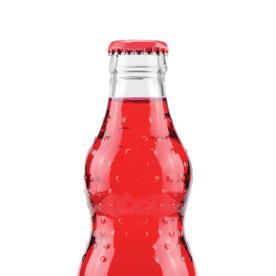

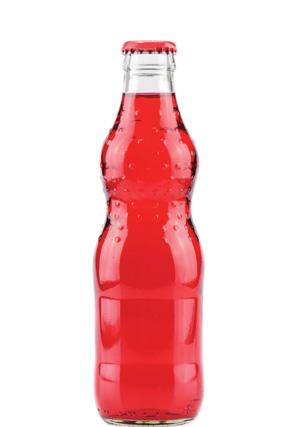
Consumers who bought a packaged beverage were most likely to have salty snacks or candy in their basket.

Consumers who purchased beer were most likely to have salty snacks, candy or OTP in their basket.

Consumers who purchased OTP illustrate the rise of the nicotine polyuser—they were most likely to have salt snacks, candy or cigarettes in their basket.






When consumers purchased salty snacks, the two most frequent basket companions were packaged beverage or candy.












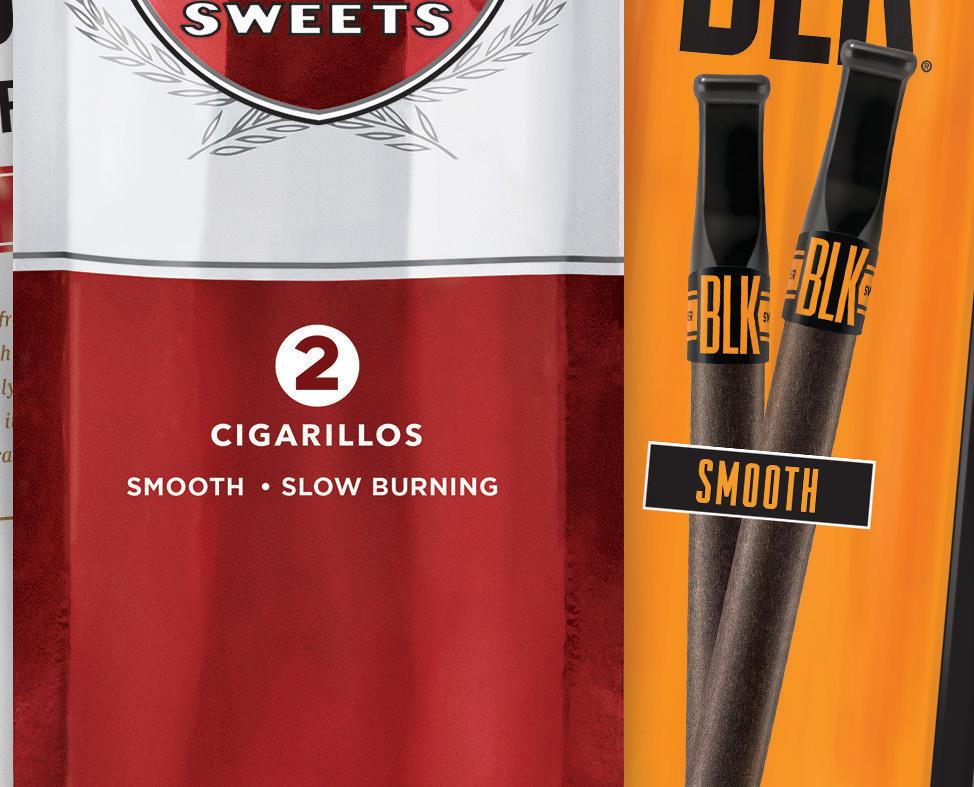






















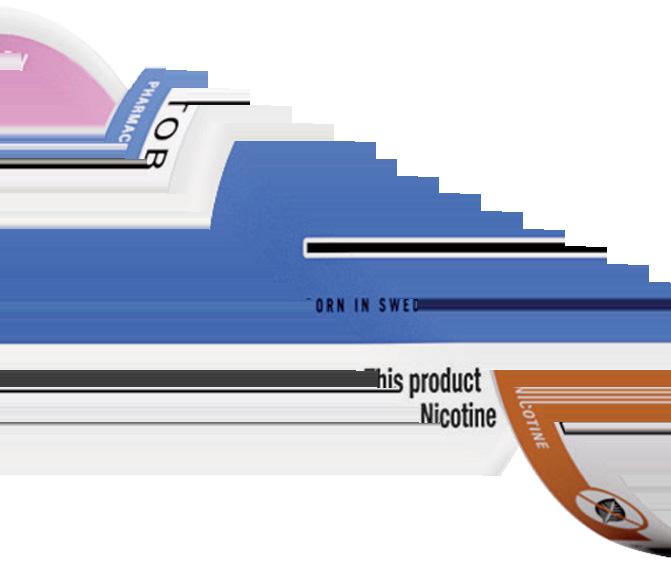




Premier Manufacturing is excited to introduce NIC-S®. Premium tobacco-free nicotine pouches backed by extensive scientific research, made with pharmaceutical grade nicotine, and is setting a higher standard for nicotine pouches.


PHARMACEUTICAL GRADE NICOTINE









6 FLAVOR PROFILES WITH 3 STRENGTHS (3MG, 6MG, AND 9MG)






EXTENDED NICOTINE RELEASE


LONG LASTING FLAVOR
PREMIUM SOFT POUCHES










































































































